A welcoming patio ceiling does more than keep the weather out — it frames every gathering, carries your lighting and fans, and quietly sets the mood for lazy brunches or lively parties outdoors. From timeless timber planks to futuristic solar panels, today’s material palette and design tech make it easy to match overhead style with the way you live. Below you’ll discover 25 distinctive patio ceiling ideas, each paired with practical guidance on cost, durability, and maintenance so you can pick the option that truly suits your climate, budget, and taste. Let’s raise our gaze and explore the possibilities.
1. Tongue-and-Groove Cedar Patio Ceiling
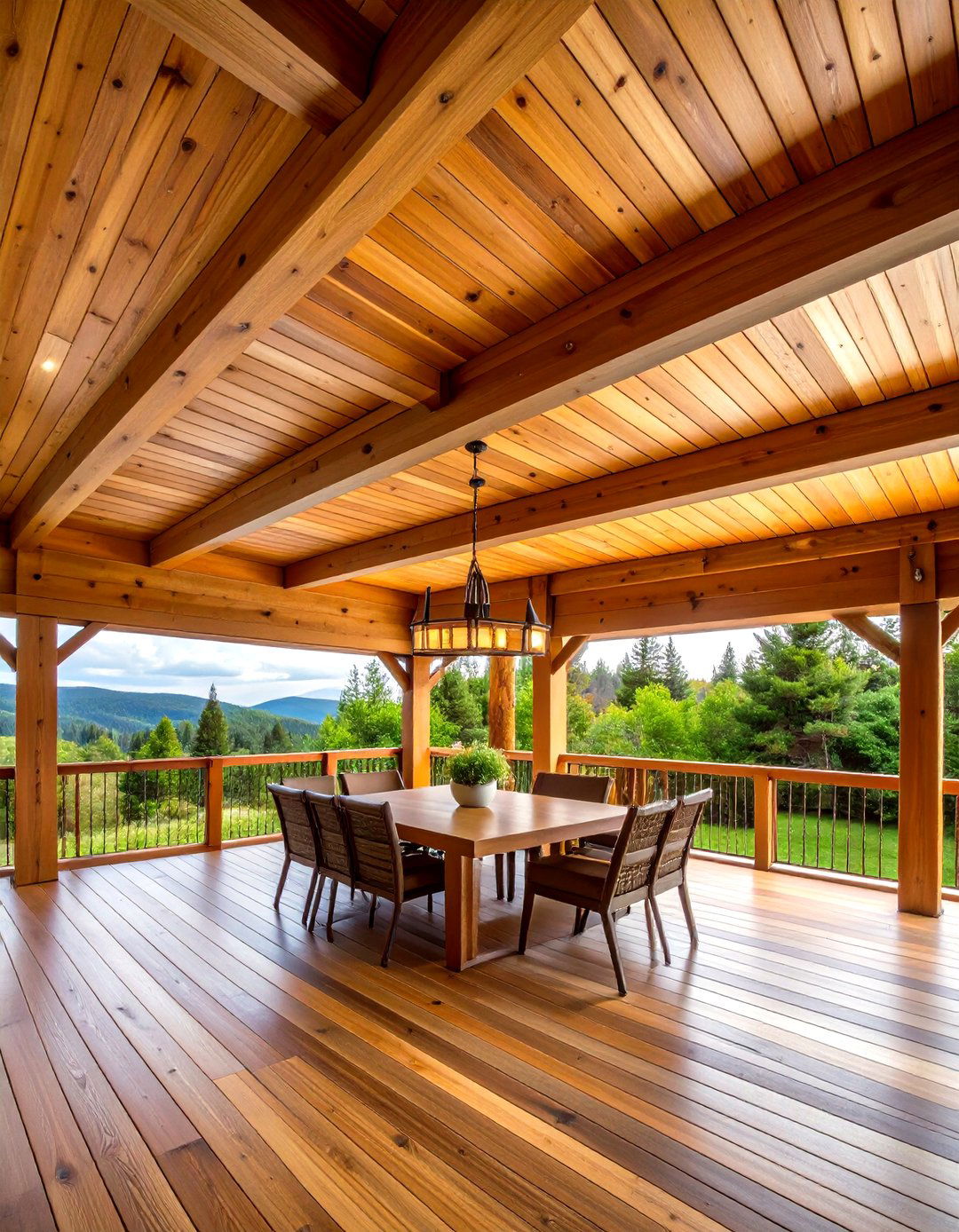
A warm sweep of cedar boards delivers instant cabin-style comfort to a patio ceiling while naturally resisting insects and rot thanks to the wood’s own oils. Opt for 1×6 tongue-and-groove planks; they lock together tightly, hide fasteners, and minimize seasonal movement. Finish them with a breathable exterior oil rather than glossy film so moisture isn’t trapped above. Because cedar is lightweight, installation overhead is easier than with hardwoods, and upkeep boils down to a light wash and fresh coat of oil every couple of years in harsh sun. The result is a ceiling that smells as good as it looks and weathers to a silvery patina if left unfinished.
2. “Haint Blue” Painted Patio Ceiling
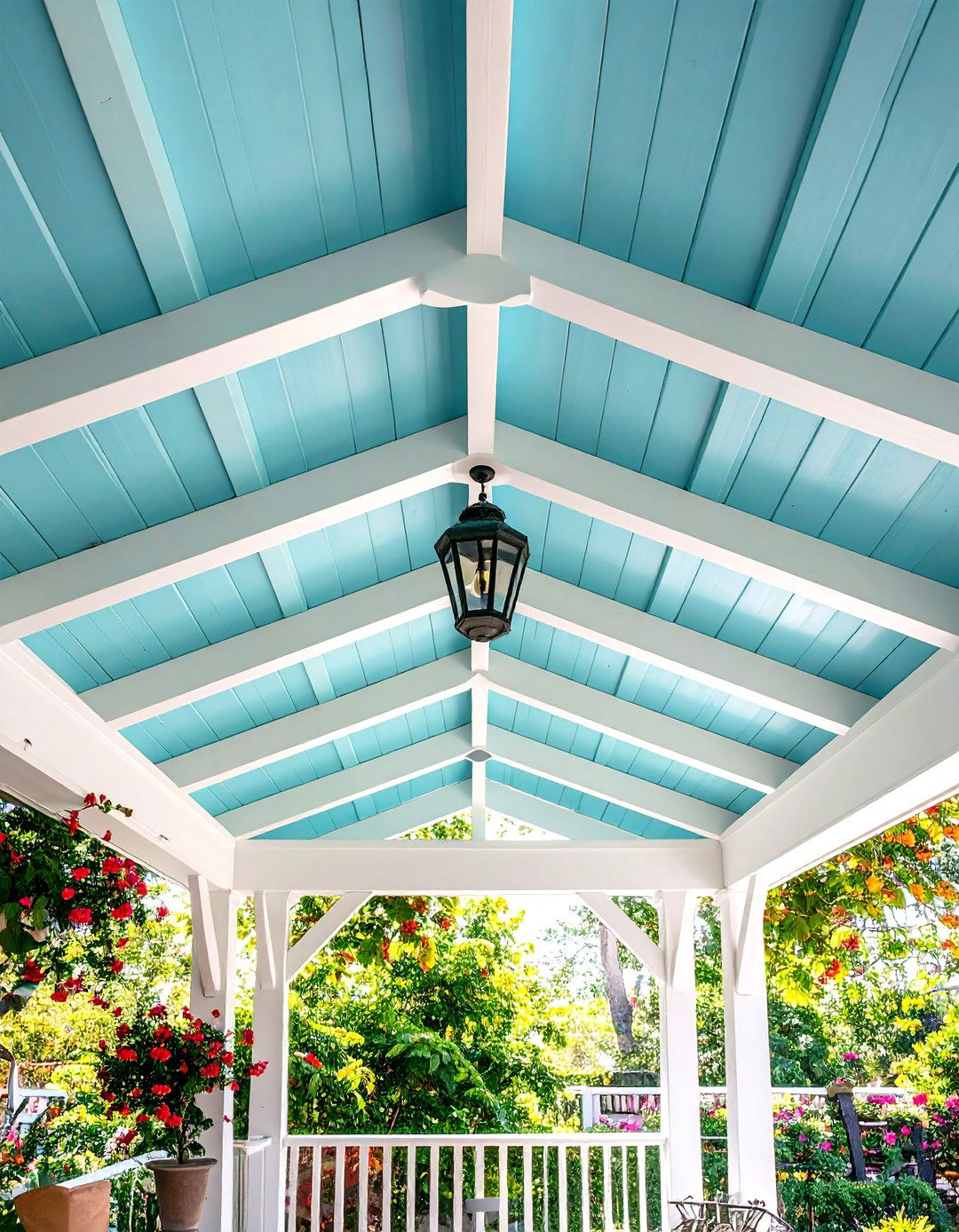
Folklore meets function when you paint your patio ceiling a pale “haint blue, ” the aqua hue once believed to ward off spirits and insects across the coastal South. Beyond superstition, the cool tint bounces daylight onto seating areas, making tight porches feel taller and brighter. Use exterior-grade latex with a mildew-resistant additive, and prime first if you’re covering raw wood or repaired drywall patches. Satin sheen hides small surface waves yet wipes clean easily. Combine with crisp white beams for classic contrast or try color-drenching rafters, trim, and the ceiling itself for a bold, contemporary twist highlighted in current porch-paint trends.
3. Fiber-Cement Beadboard Patio Ceiling
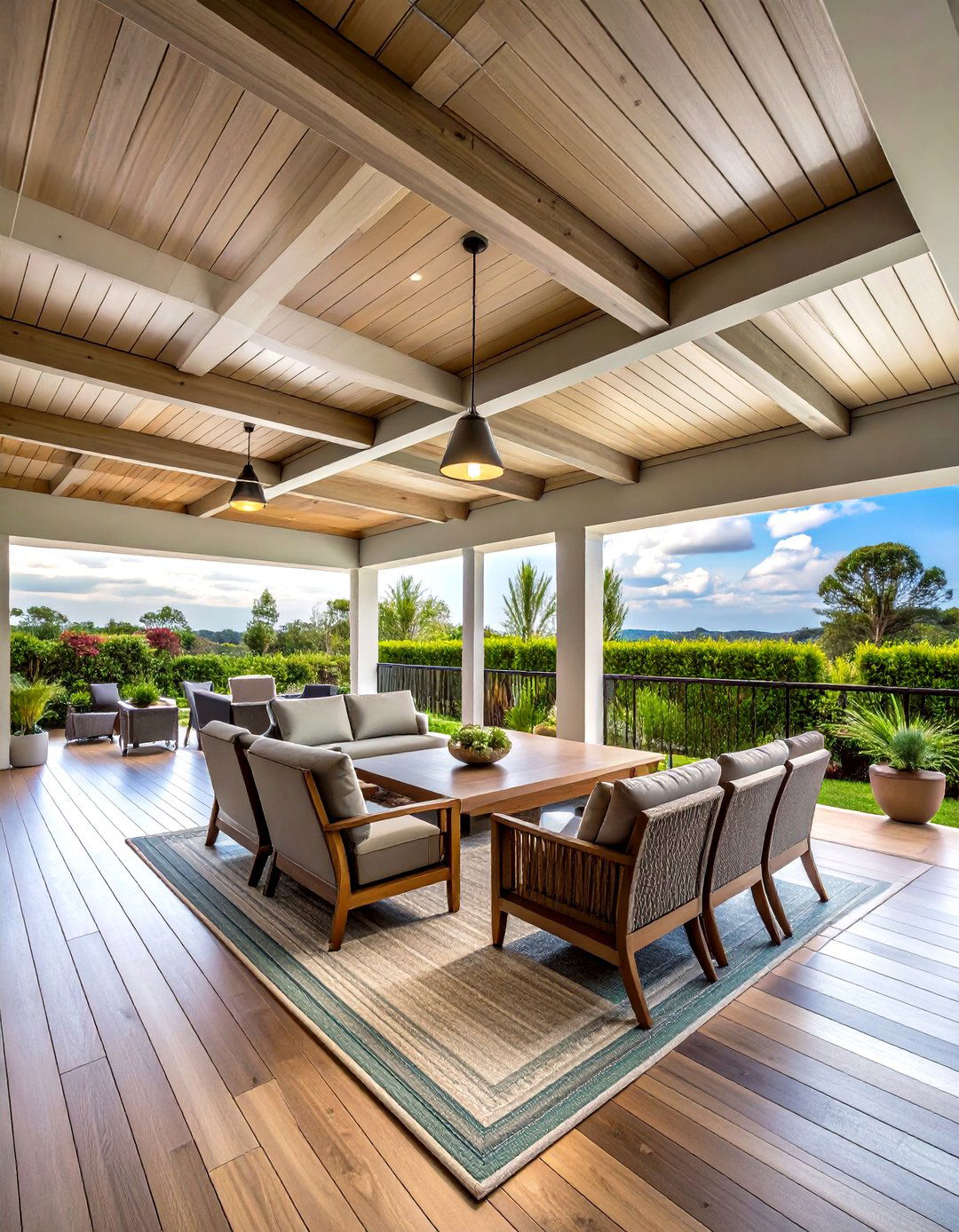
When humidity skyrockets, a fiber-cement beadboard patio ceiling stays straight and spotless where wood might warp. Factory-primed planks install like timber but shrug off rain, salt air, and termites, making them popular on coastal or poolside projects. A subtle tongue-and-groove bead adds texture without distracting from other finishes. Because boards arrive in 4- or 12-foot lengths, seams align neatly on joists for a consistent grid that mimics traditional porch ceilings. Topcoat with exterior acrylic in any color, and you’ll only need the occasional hose-down to remove pollen — no scraping or repainting every spring.
4. Slatted Wood Patio Ceiling for Modern Lines
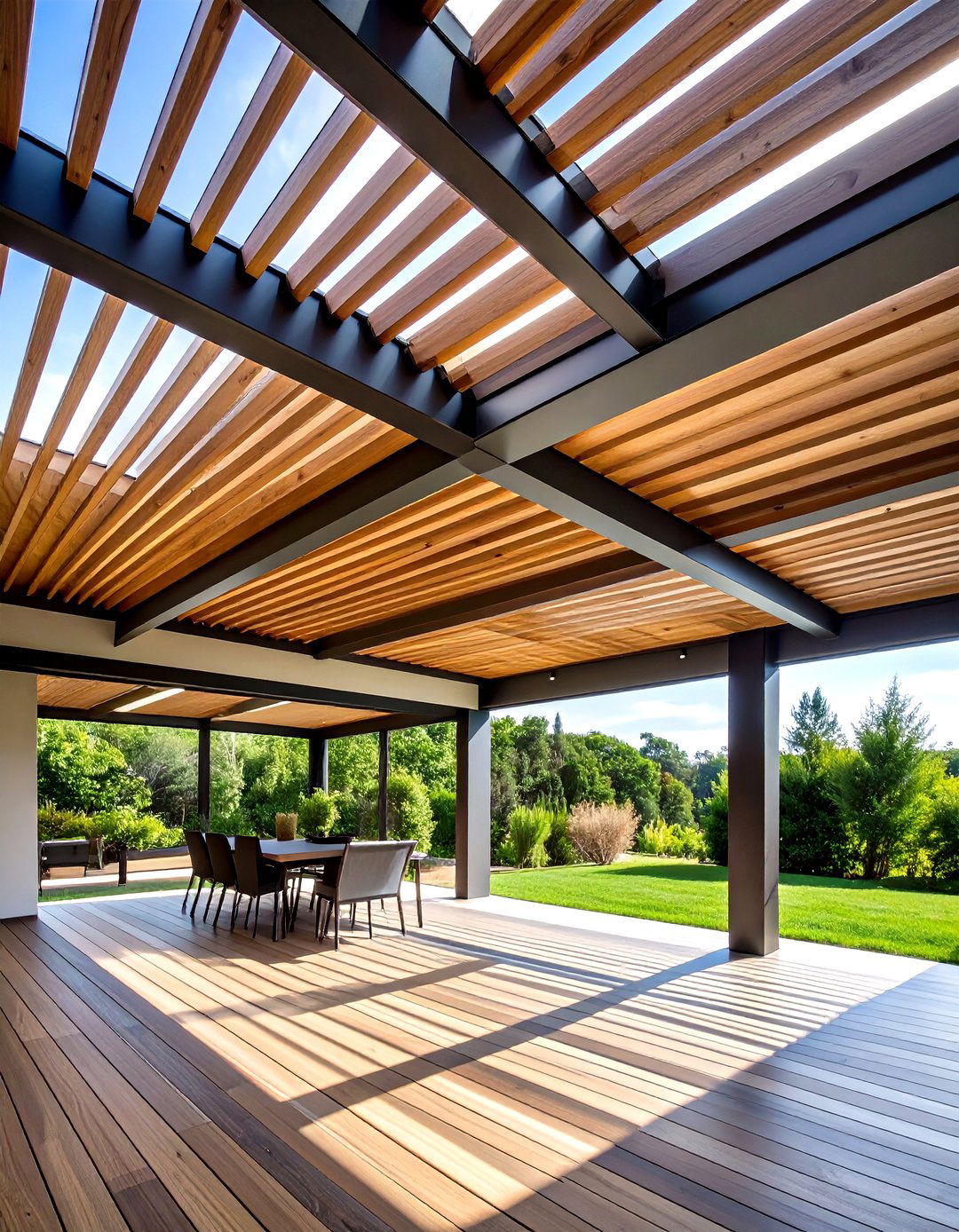
Looking for a sleek, airy vibe? Run narrow slats with ¼-inch gaps across the patio ceiling to create rhythmic shadows that shift during the day — a favorite on design-trend boards this year. Choose kiln-dried cedar or thermally modified pine to reduce cupping, and stain both faces before installation so raw edges aren’t visible through the gaps. Black furring strips or metal hat-channels above the slats hide fasteners and recess low-voltage strip lights, turning the ceiling into a lantern at night. The open joints also help hot air escape, making slatted ceilings as practical as they are photogenic.
5. Aluminum Soffit Panel Patio Ceiling
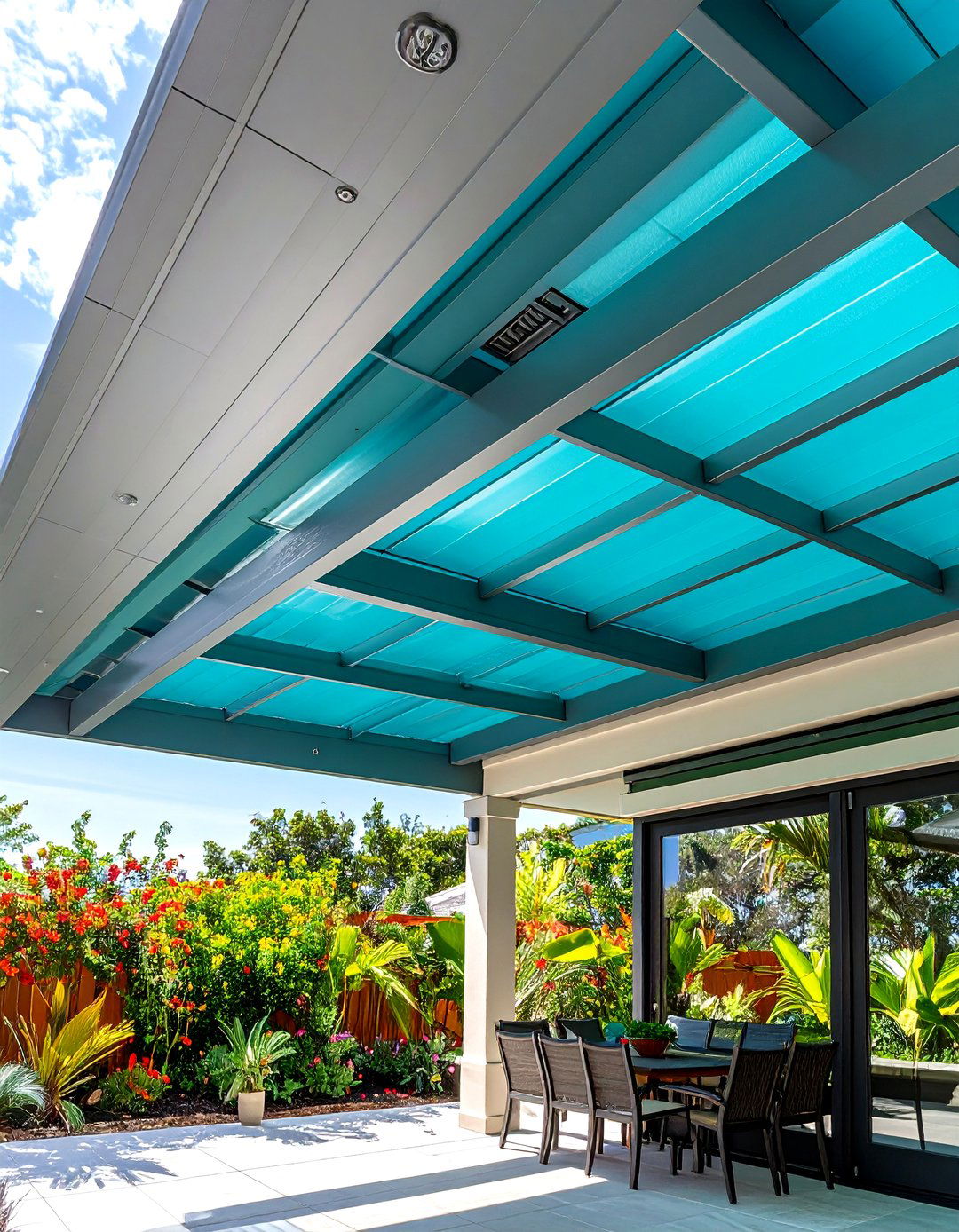
Those who never want to re-stain again gravitate toward prefinished aluminum soffit panels, available in wood-look or matte colors with built-in vents for airflow. The baked-on coating (often Kynar® or similar) resists chalking and salt spray, ideal for coastal patios. Panels snap together quickly with hidden J-channels, covering big areas fast, and at only 0. 024-inch thickness they’re light enough for a solo DIYer. Pair with stainless or powder-coated fans to eliminate galvanic corrosion. A garden hose wash twice a year returns the ceiling to showroom shine — no sanding, no peeling paint, ever.
6. Translucent Polycarbonate Patio Ceiling
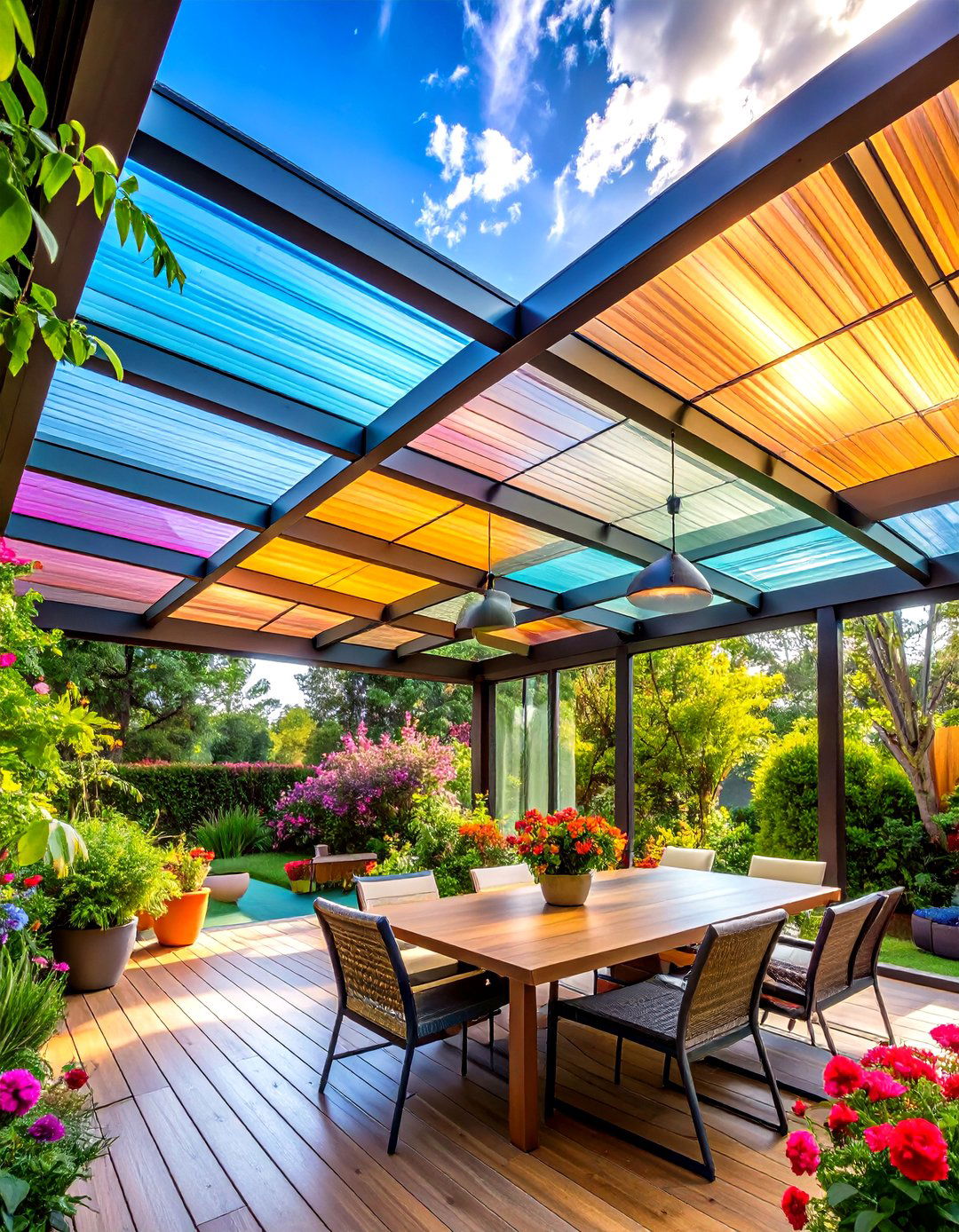
If you love natural light but crave rain protection, consider multiwall polycarbonate panels overhead; they transmit up to 85 % daylight while blocking nearly all UV rays. Clear sheets keep plantings happy, while bronze or opal tints reduce glare. Install with aluminum H-channels and rubber gaskets so panels can expand in summer heat without buckling. Lightweight panels span rafters easily, cutting labor costs compared with glass. They’re also 20 × tougher than fiberglass, making hail a non-issue. Add dimmable LED string lights underneath and you’ll enjoy star-like sparkle even on cloudy evenings.
7. Exposed-Beam Rustic Patio Ceiling
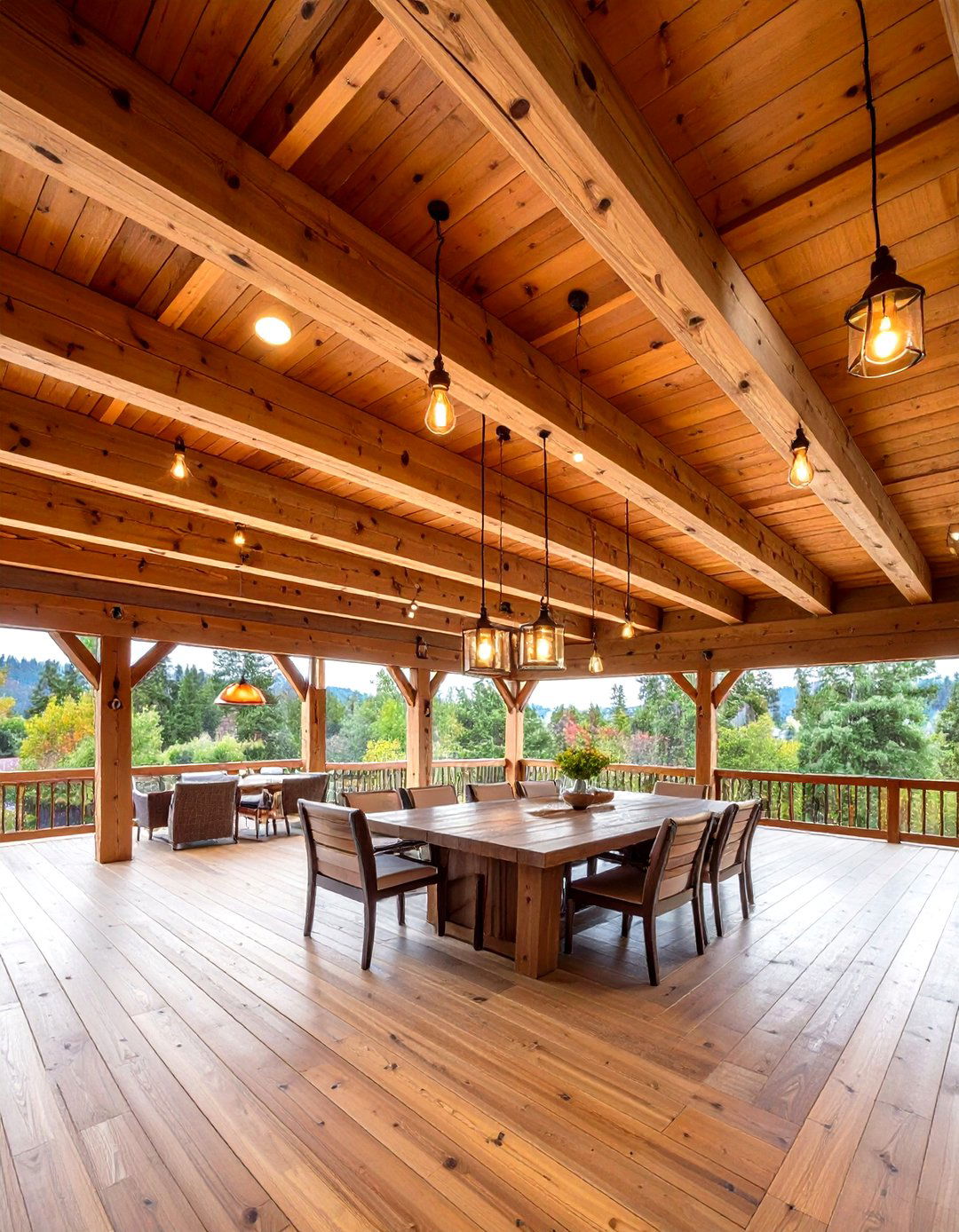
Nothing says lodge chic like heavy timber beams left proudly exposed against a tongue-and-groove deck above. Use rough-sawn Douglas fir or reclaimed barn beams for authentic texture, then brush on a clear penetrating sealer so the ceiling ages gracefully without darkening too much. HGTV advises leaving at least 18 inches of cavity height if you plan to hang a fan between beams for good air circulation. To keep spiders from nested cobwebs, finish boards with a low-sheen polyurethane that lets you sweep surfaces easily. Edison pendants on wrought-iron chains complete the mountain-retreat feel.
8. Under-Deck Drainage Patio Ceiling
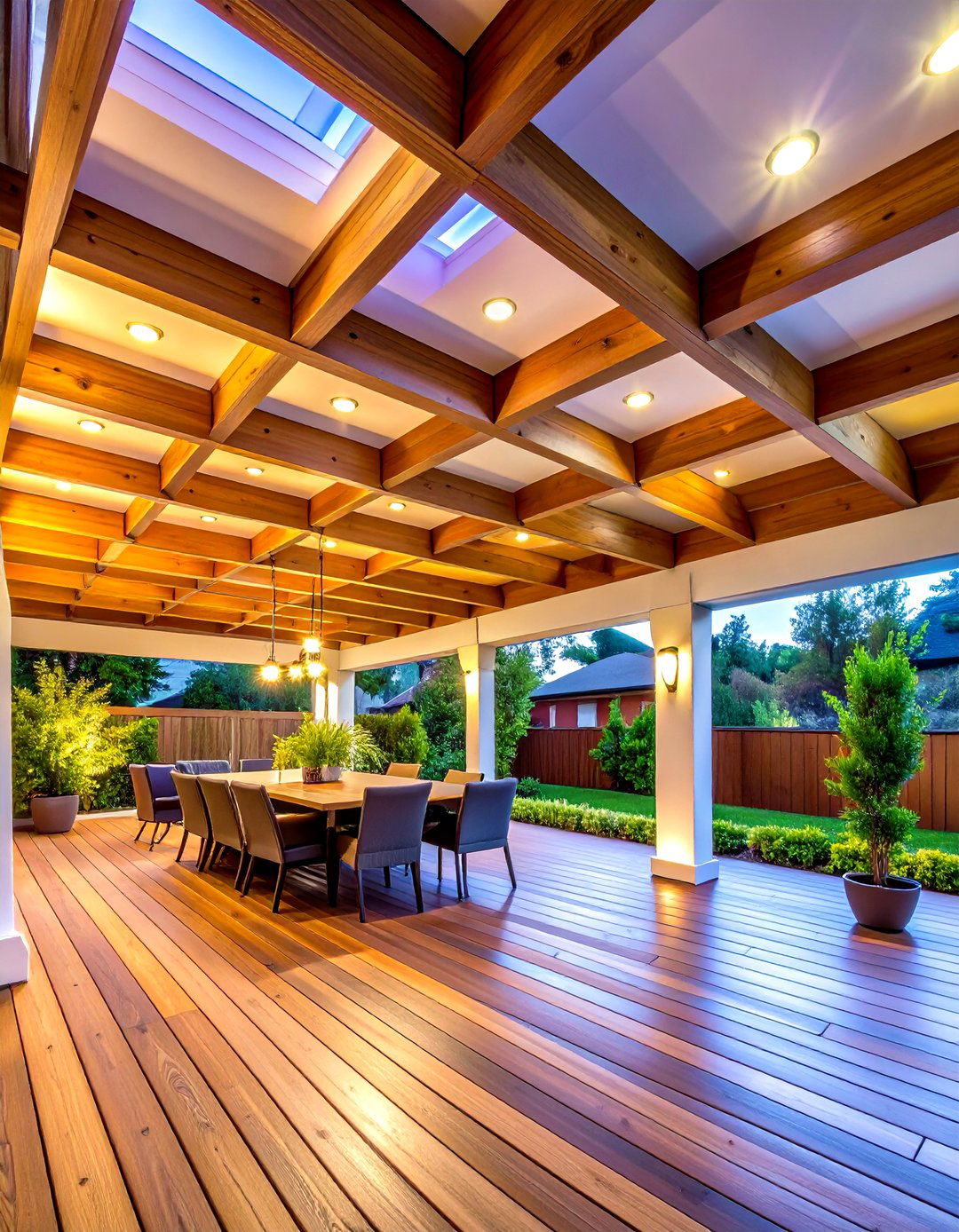
Homeowners with second-story decks above a patio can capture dry square footage by installing an under-deck ceiling system that channels rainwater to a perimeter gutter. Kits such as TimberTech DrySpace snap between joists and hide wiring for lights or heaters, effectively doubling living space. Choose white panels to bounce illumination or bone-colored ones for softness. Because water never drips through, you can safely add outdoor rugs, sectional sofas, and TVs below. Clean annually with a leaf blower followed by a hose to prevent debris buildup that might clog the hidden troughs.
9. Reclaimed Barnwood Patio Ceiling
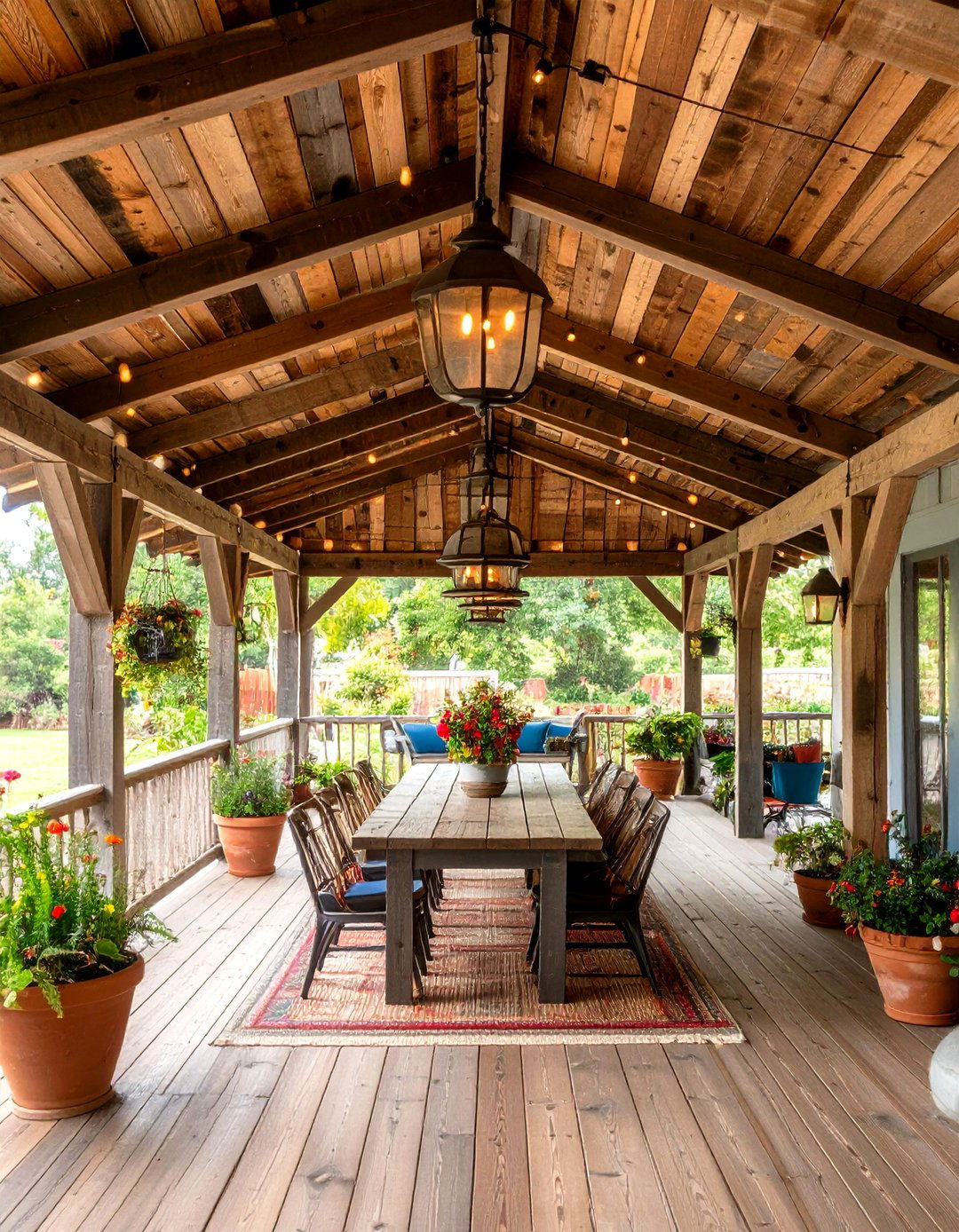
Sourcing weathered barn siding for your patio ceiling infuses eco-friendly character while keeping old lumber out of landfills. Scrape loose debris, treat boards with a borate preservative to deter insects, then seal with matte polyurethane to lock in the patina. Slip a vapor-permeable house-wrap above to manage moisture silently. Stagger board lengths randomly for a handcrafted look, and incorporate forged-iron strap details to cover unavoidable seams. The uneven coloration becomes a conversation piece, proving sustainability can be stylish. Pair with galvanized fixtures and vintage rugs for farmhouse charm that feels utterly authentic.
10. Coffered Patio Ceiling Elegance

Add architectural gravitas outside by framing the patio ceiling into shallow coffers using 2×4 lumber and moisture-resistant MDF trim. Paint the beams bright white and the recesses a gentle gray-blue for dimension that echoes upscale interiors. According to Better Homes & Gardens, even a subtle color shift makes ceiling moldings pop and draws the eye upward. Recessed LED downlights fit neatly inside each panel, evenly washing dining tables below. While coffering requires more lumber, labor, and paint than flat cladding, the refined geometry boosts home value and complements traditional architecture beautifully.
11. Bamboo or Rattan Patio Ceiling
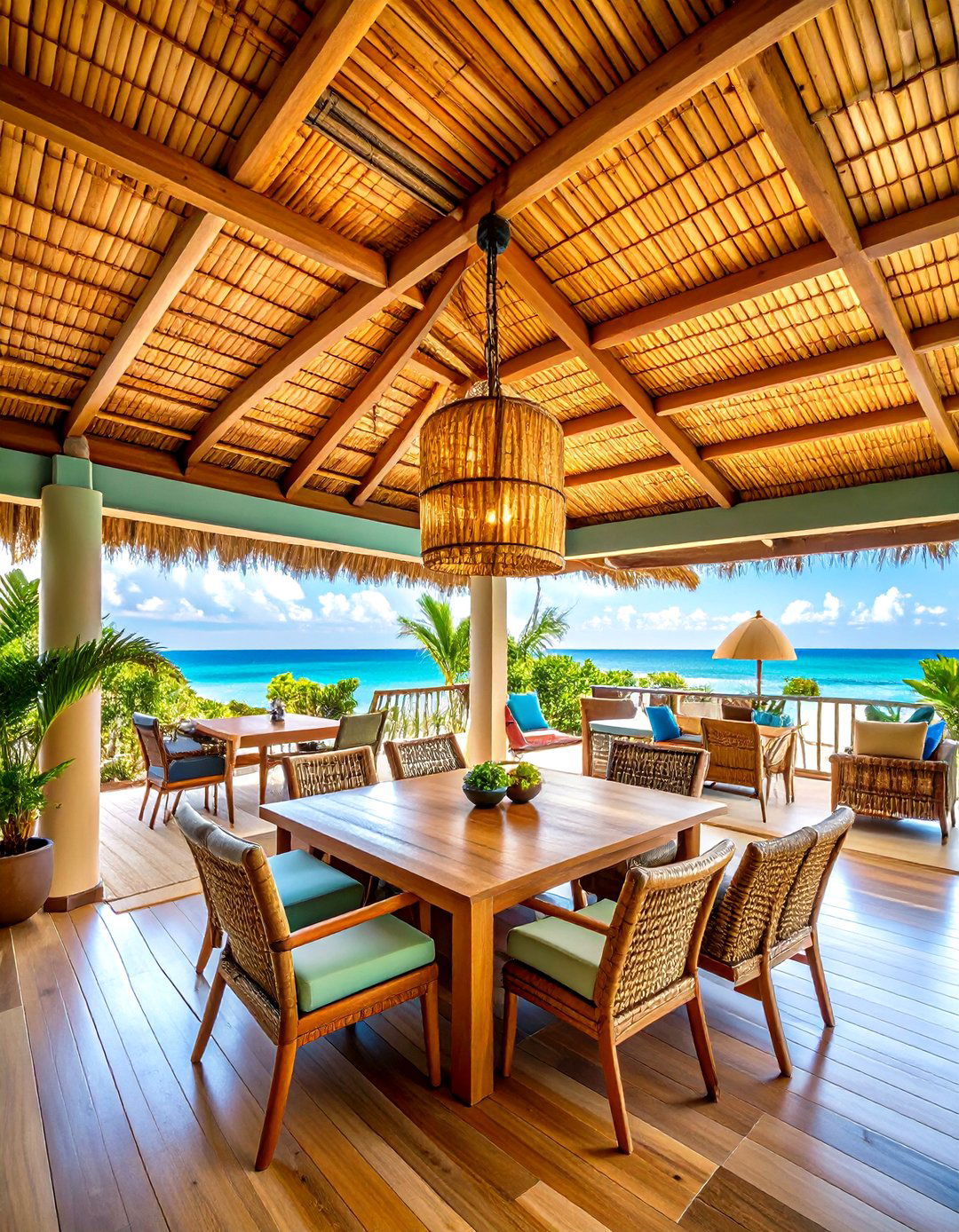
For tropical flair on a budget, staple woven bamboo matting or rattan panels onto plywood sheathing, then finish edges with stained hardwood battens. Natural cane materials stay surprisingly stable outdoors if kept under a solid roof and sprayed with a clear UV-resistant marine varnish annually. Their organic texture hides dusty rafters and mellows bright sun, creating the relaxed vibe of a beach cabana. Because bamboo is lightweight, installation is quick — just use stainless staples to avoid rust streaks. Pair with sisal rugs and linen cushions for a cohesive island escape.
12. Living Vine Patio Ceiling Grid
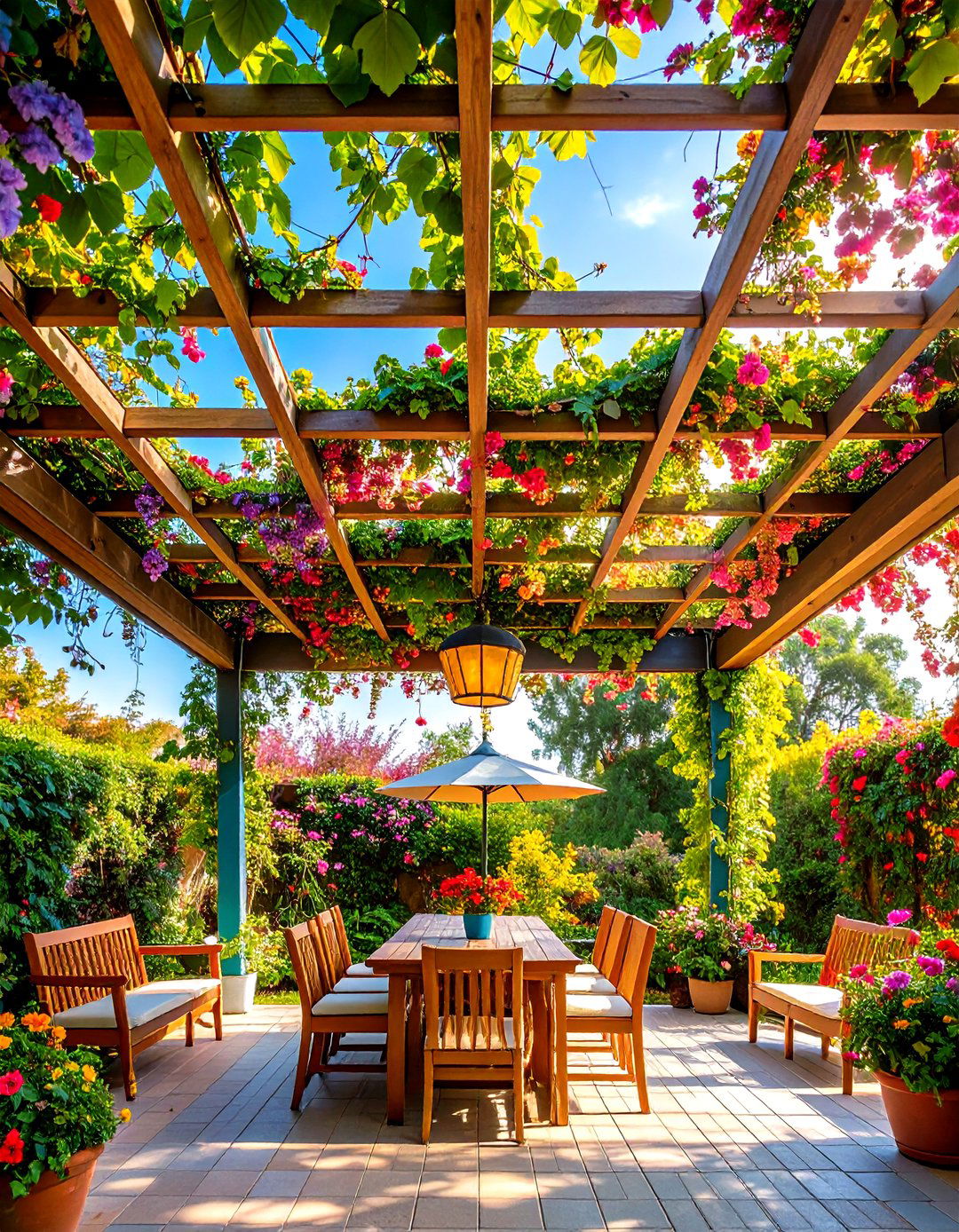
Turn shade into sculpture by training climbing jasmine or grapevines across an open lattice ceiling. Start with 2×2 pressure-treated slats spaced 8 inches apart beneath sturdy beams so stems can weave naturally. HGTV notes that ventilated roof cavities help prevent trapped moisture when vegetation is nearby. Run slow-drip irrigation along the top and prune annually to keep weight manageable. As foliage thickens, dappled light cools seating below while fragrance drifts on evening breezes. Bonus: fallen leaves land above the lattice, not on your furniture, making cleanup simpler than ground arbors.
13. Skylight-Integrated Patio Ceiling
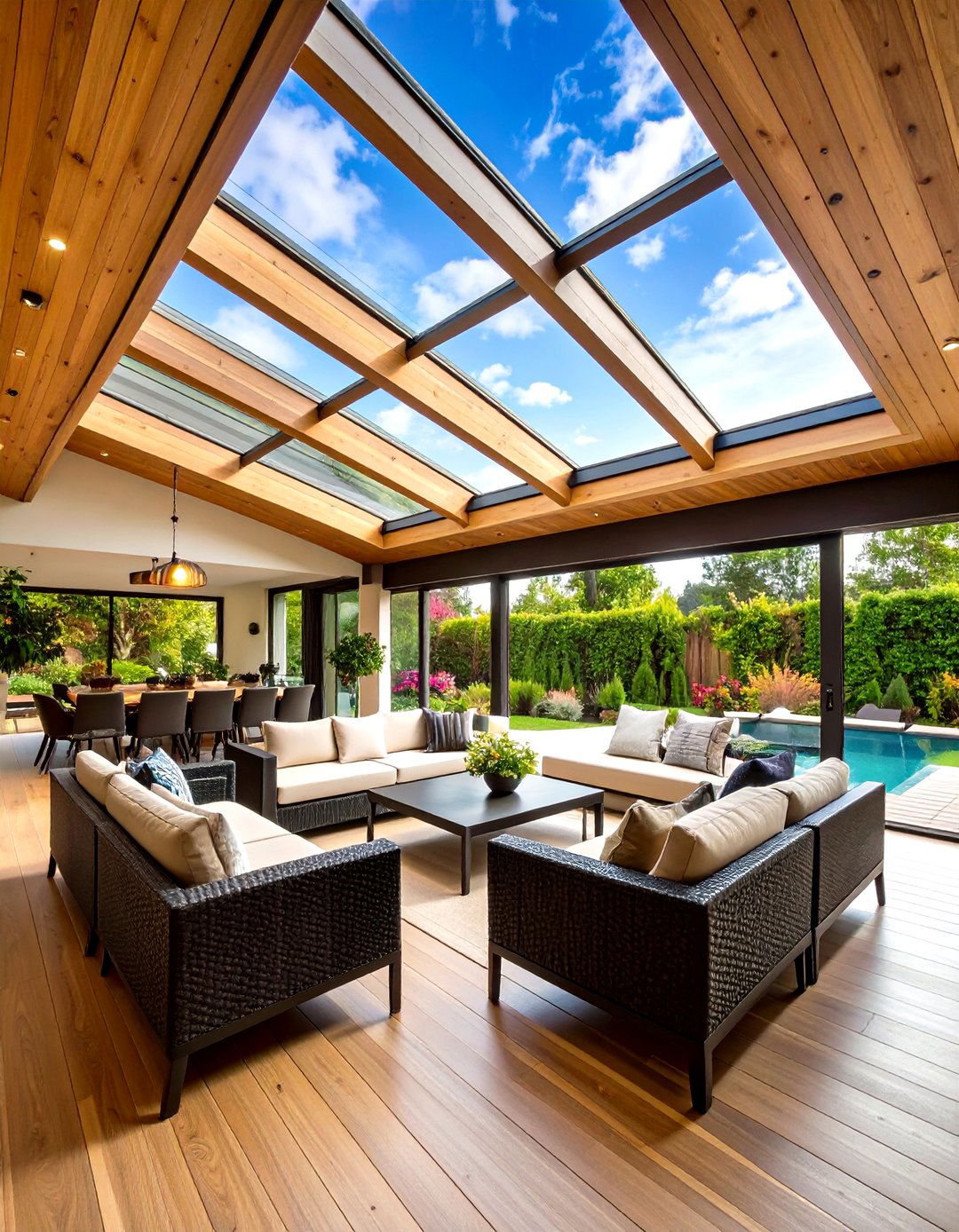
If a solid roof feels cave-like, cut recesses for double-paned skylights that siphon daylight deep into covered areas while remaining leak-free thanks to modern flashing kits. Position openings toward the patio’s rear so glare doesn’t blind diners. Clear low-E glass blocks UV heat, or specify bronze tint to reduce intensity in desert climates. Inside the ceiling cavity, paint wells a bright white to amplify incoming rays. Add motorized shades for movies or midday naps. The result balances weather protection with the cheerful ambience of an open pergola.
14. Hand-Painted Mural Patio Ceiling

Channel Michelangelo — on a smaller scale — by commissioning or DIY-painting a cloudscape or botanical mural across a smooth patio ceiling. Begin with moisture-resistant drywall or marine plywood skim-coated and sanded. Use exterior-grade acrylics, then seal the finished artwork with two coats of non-yellowing spar urethane. Better Homes & Gardens reports homeowners increasingly personalize outdoor ceilings with bold patterns to extend interior style outdoors. Whether you choose twining wisteria or whimsical constellations, a custom mural transforms overhead space into art that sparks conversation at every gathering.
15. Corrugated Metal Patio Ceiling

With rural roots and industrial edge, galvanized steel or painted corrugated panels fasten directly to furring strips, creating a water-shedding patio ceiling in hours. Attach with neoprene-washer screws to prevent leaks and noise. For acoustics, lay fiberglass batts above before installing panels — this dampens the patter of rain. A high-rib profile adds stiffness so spans can be wider, reducing framing costs. Prance Building notes aluminum versions weigh less and resist corrosion even at the seashore. Pair the ceiling with reclaimed brick floors for a farmhouse-loft fusion.
16. Stretch-Fabric Sail Patio Ceiling
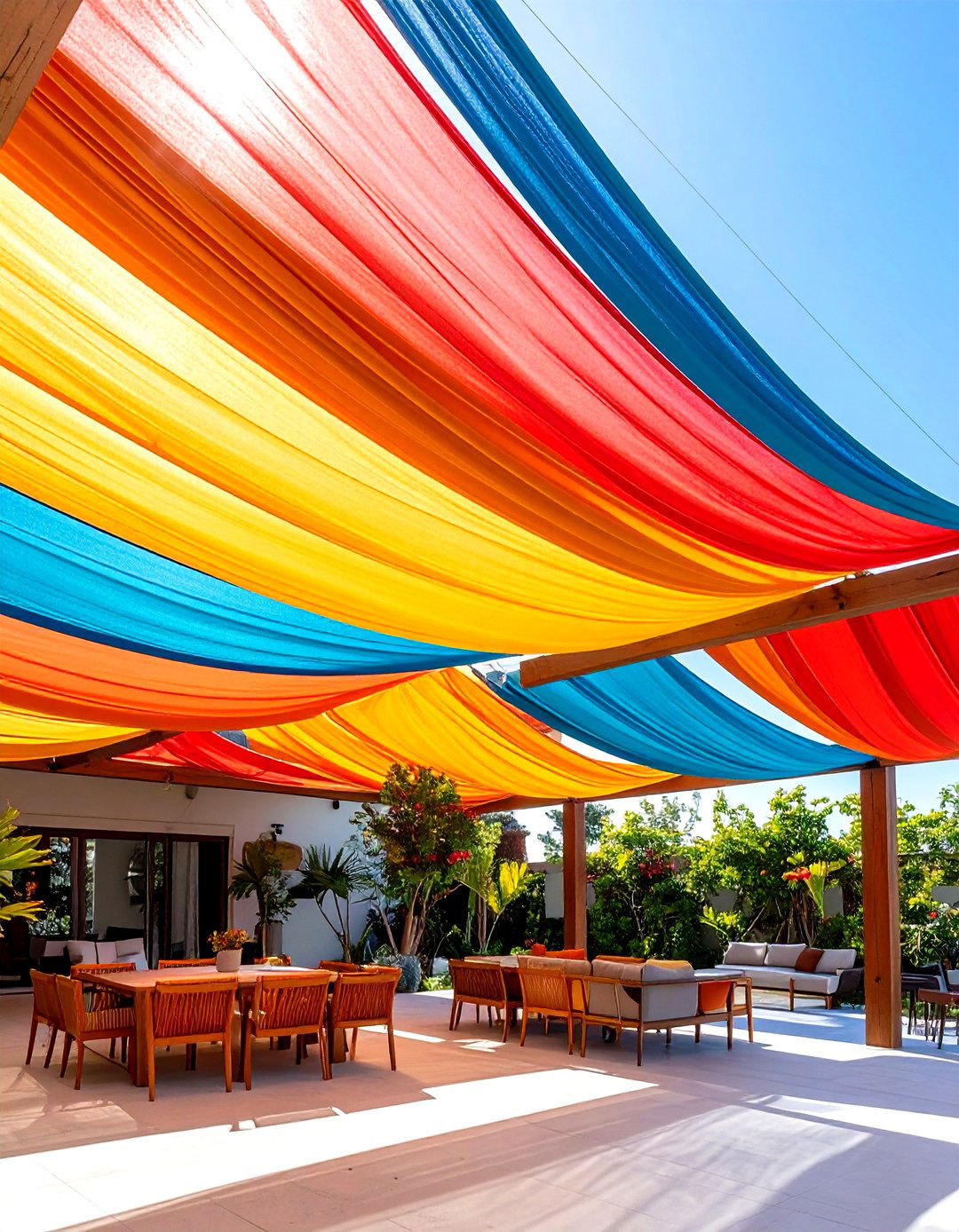
When permanent roofing isn’t an option, tensioned shade sails or commercial-grade stretch fabric offer a sculptural ceiling you can remove each winter. Anchor stainless turnbuckles to perimeter beams and pitch the fabric at least 20° so rain runs off. UV-stabilized polyester or HDPE mesh lasts five seasons or more before fading. Choose contrasting colors to layer shapes and cast playful shadows. Because air passes through the weave, the space stays breezy yet protected from harsh sun. Lower sails slightly in late afternoon to catch golden-hour light for photos.
17. LED Strip-Lit Patio Ceiling
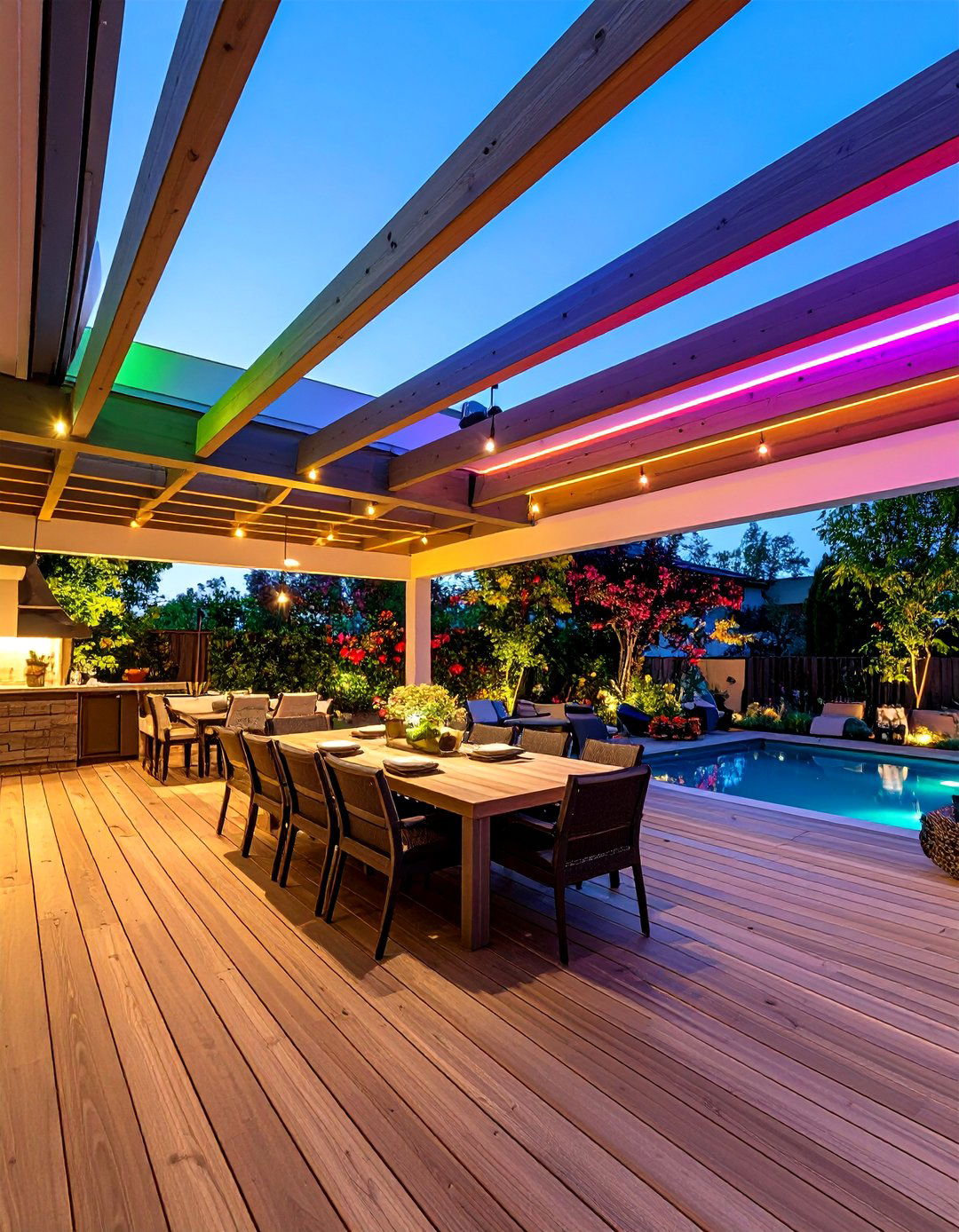
Recessing smart RGBW LED strips inside a narrow channel along each patio ceiling joist adds ambient glow that you can tune from dinner-time warm white to party-time color splashes. Videos on soffit lighting show best practices for daisy-chaining Wi-Fi-enabled fixtures and hiding drivers in junction boxes. Use aluminum channels with diffusers to avoid diode hotspots, and seal connections with outdoor-rated heat-shrink tubing. Pair the lighting with voice control to dim instantly when movie night starts, proving technology can be as welcoming outdoors as in.
18. Vaulted Patio Ceiling Ready for Fans

Raising a gable or shed roof above your patio ceiling creates room for high-performance ceiling fans that slice summer humidity. Ensure wiring boxes are fan-rated and bolted to blocking, not merely screwed into sheathing. HGTV emphasizes considering fan diameter and blade clearance early in ceiling-height planning. Stain exposed rafters a tone darker than decking to emphasize height, then tuck LED uplights along the ridge to highlight structure. This extra air movement can drop perceived temperature by up to 10 °F, turning steamy evenings into comfortable hangouts.
19. Shiplap Patio Ceiling
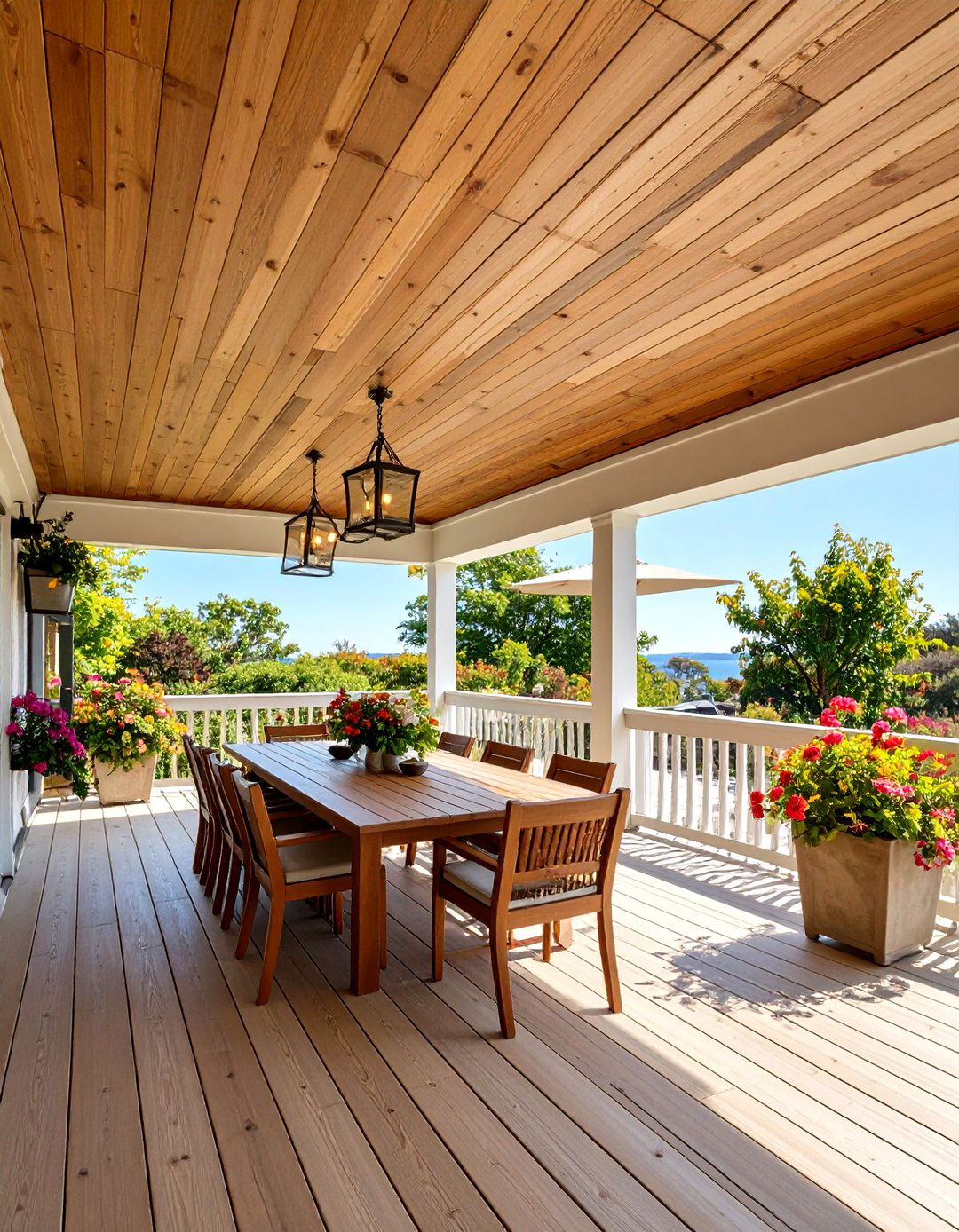
Horizontal shiplap planks give a clean, coastal look and subtly guide the eye toward sunset views. Unlike tongue-and-groove, shiplap’s square edge with rabbeted overlap lets wood expand without buckling, handy in humid zones. Use primed, outdoor-rated boards and paint all sides before installation to seal out moisture. If you crave shadow lines, paint the lap edges a contrasting color so thin stripes appear between boards. Fire-up a brad nailer for speedy installation, then caulk perimeter gaps for a polished finish that echoes modern farmhouse interiors.
20. PVC Beadboard Patio Ceiling
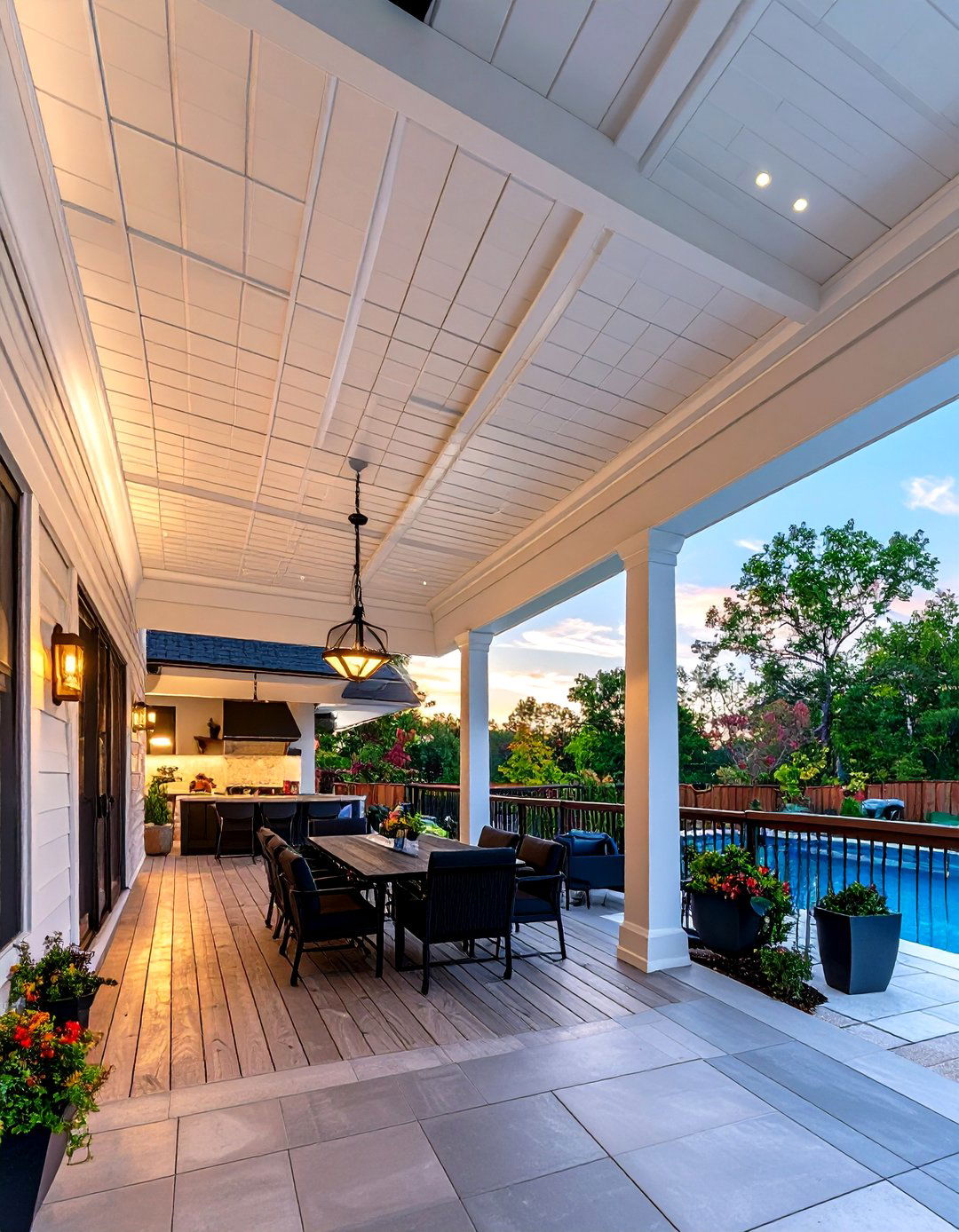
PVC beadboard imitates classic millwork yet shrugs off mold, perfect for splash-prone pool patios. Boards won’t absorb water, peel, or support mildew growth, and they cut with standard woodworking tools. Because color runs through the material, scratches hardly show; still, a coat of acrylic latex improves UV stability. According to Allura, synthetic beadboard panels retain crisp grooves for decades without swelling. Use stainless or polymer screws and leave 1/8-inch gaps at ends for thermal movement. With carefree PVC overhead, patio maintenance shifts to relaxing, not repainting.
21. Dramatic Black-Painted Patio Ceiling
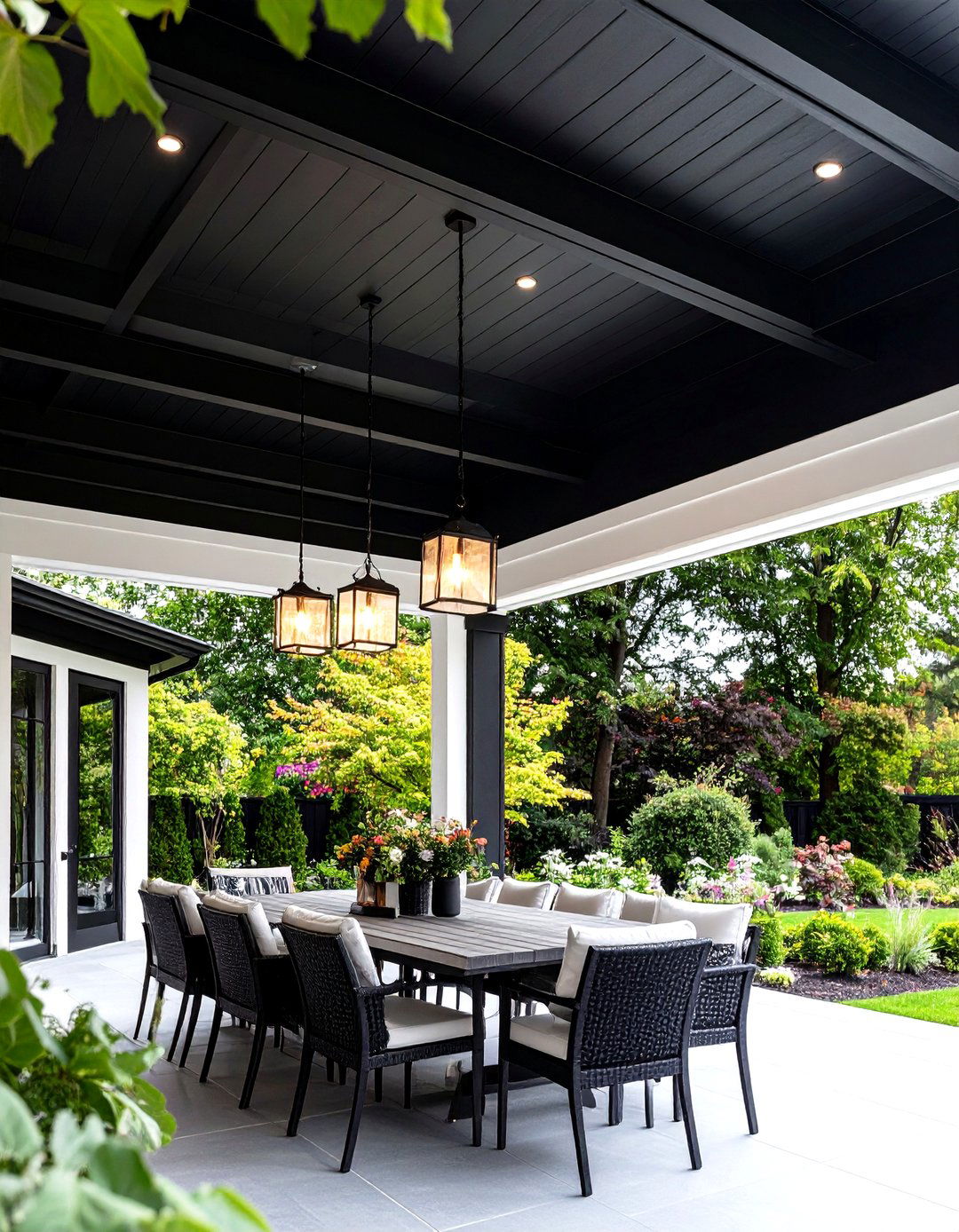
Surprisingly, painting the patio ceiling a deep matte black can make the space feel grander by erasing the visual boundary overhead, a technique showcased in modern beadboard applications. Dark pigment hides wiring runs and ductwork while spotlighting pendant fixtures and greenery. Choose an exterior acrylic in a true neutral black — undertones of green or brown will be obvious in sunlight. Satin sheen balances washability with glare control. Combine with light stone flooring and crisp white trim for striking contrast that leans contemporary without feeling cold.
22. Louvered Pergola Patio Ceiling
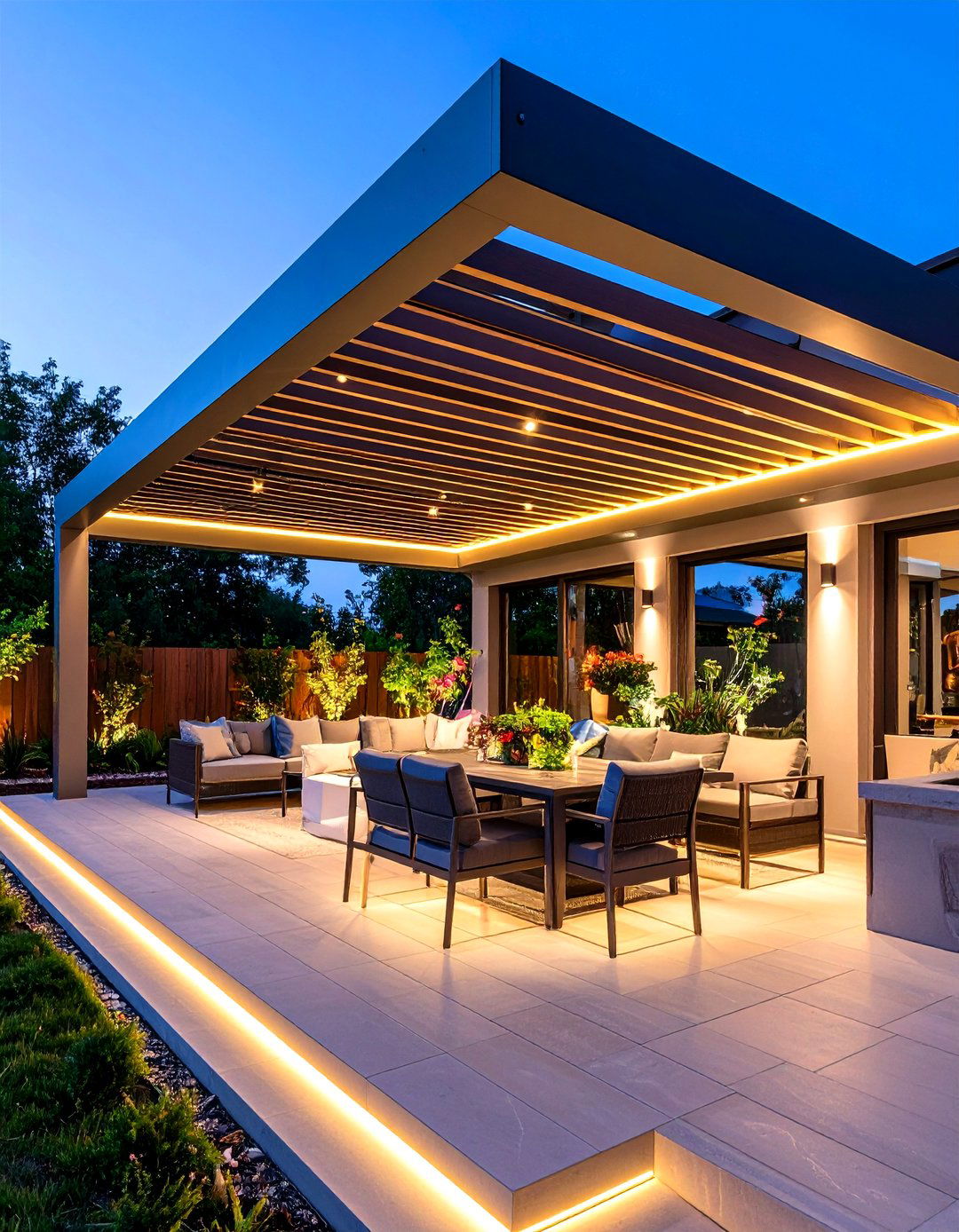
Adjustable aluminum louvers pivot from open sky to watertight roof at the push of a button, giving you shade on demand. Recent pergola systems use concealed motors and integrated gutters to drain rainwater neatly at the frame. Powder-coated extrusions endure salt and snow, while optional rain sensors close blades automatically. Mount dimmable LED strips along the louver edges for after-dark ambience. Though pricier than fixed roofs, a louvered patio ceiling offers year-round flexibility and looks sleek enough for modern architecture.
23. Outdoor-Rated Tile-Insert Patio Ceiling
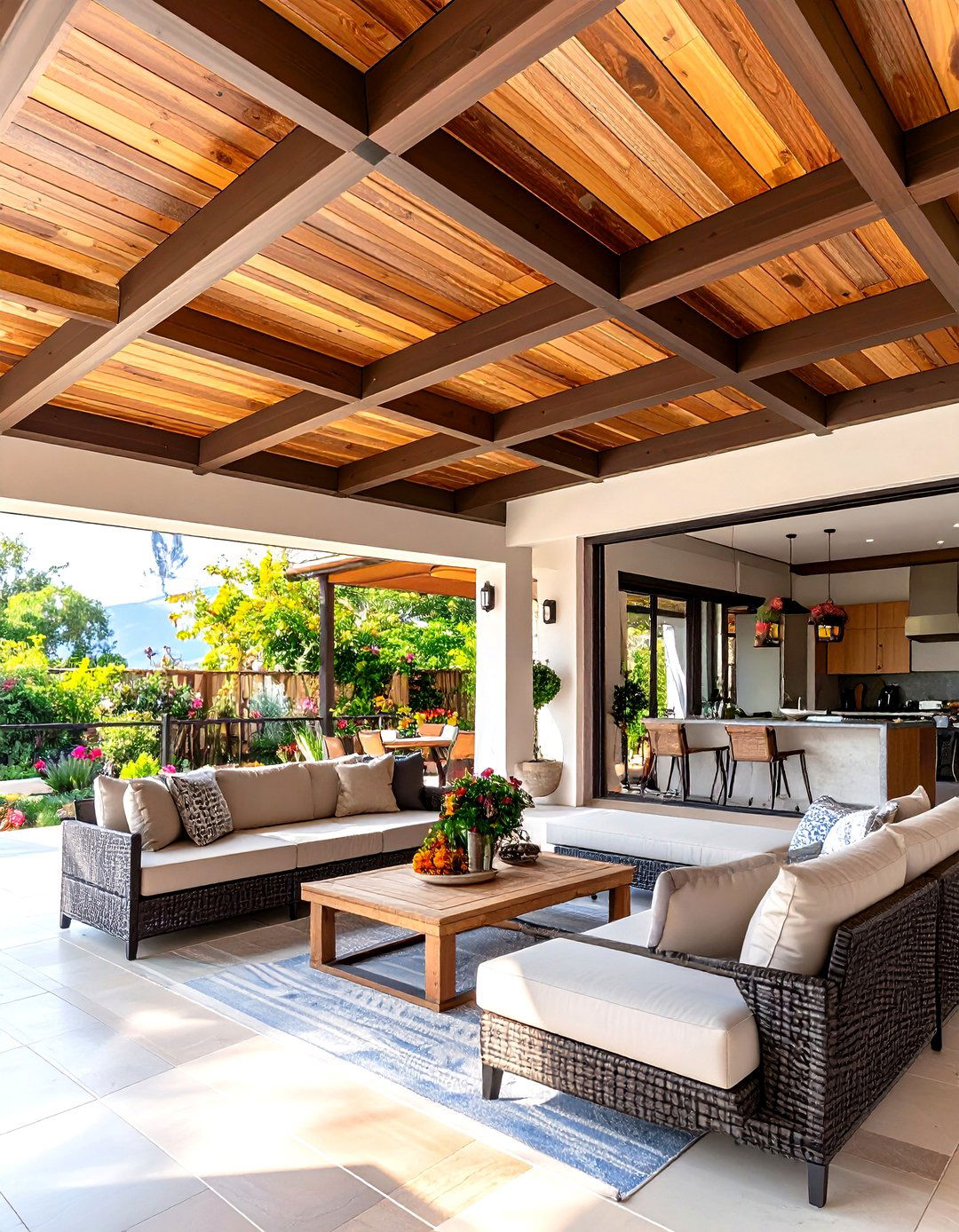
For high-end texture, install galvanized T-bar gridwork and drop-in porcelain or cement tiles approved for exterior ceilings. Tiles resemble pressed tin, wood grain, or even Moroccan encaustic patterns while resisting moisture and fire. Because they’re removable, you can access wiring anytime, a boon for tech-heavy patios. Paint the grid to match trim so the pattern takes center stage. Use silicone-edged tiles or gasketed panels designed to shed condensation; standard acoustic tiles will crumble outdoors. The result reads like an Italian loggia yet stands up to storms.
24. Acoustic-Insulated Patio Ceiling
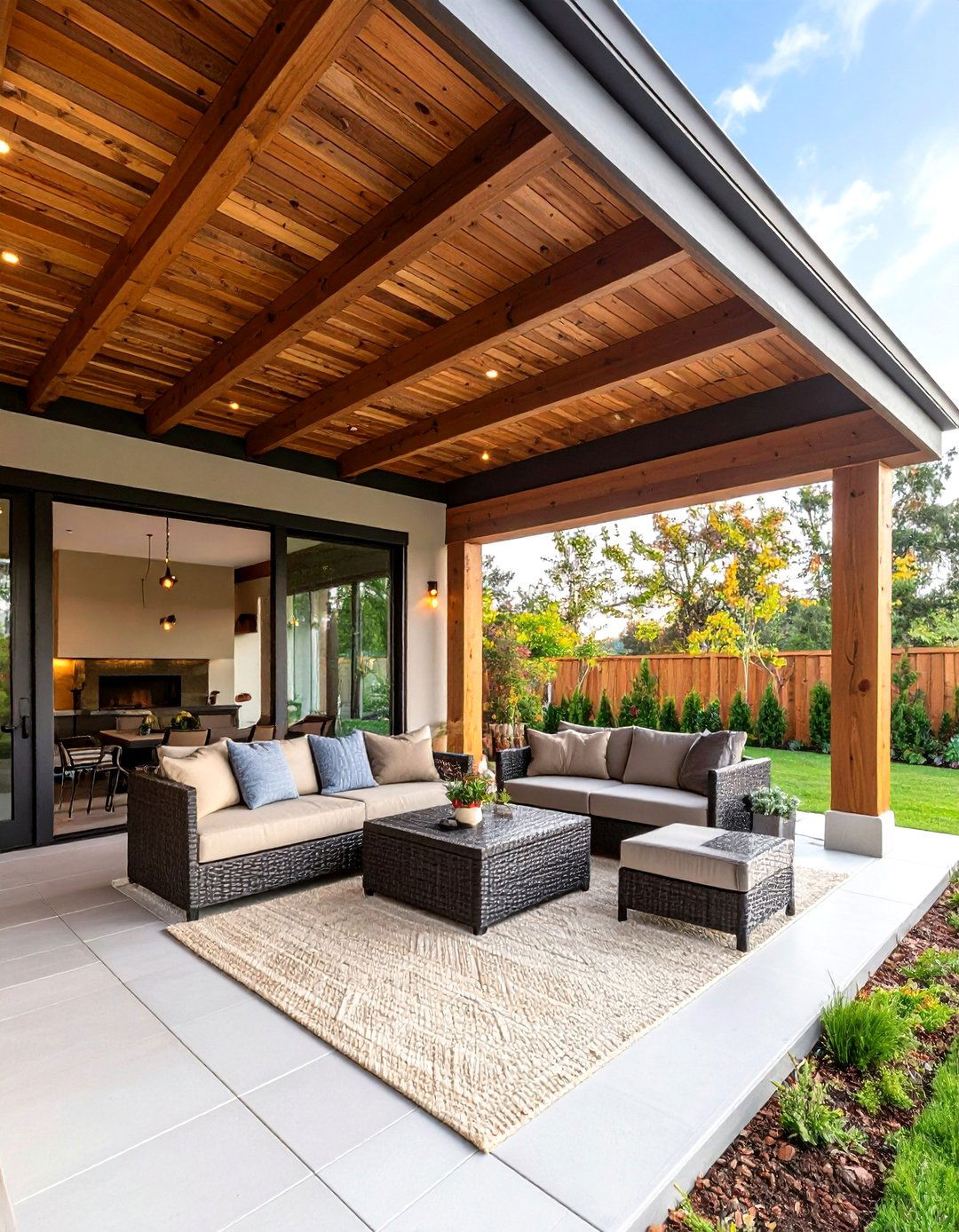
If neighborhood noise distracts from conversation, add mineral-wool batts above a tongue-and-groove or beadboard patio ceiling, then staple mass-loaded vinyl between joists before finishing. Family Handyman recommends under-deck roofs for moisture control beneath such assemblies, ensuring insulation stays dry. The dense layers absorb echoes from hardscapes and nearby traffic, making music and movie audio clearer at lower volumes. Paint or stain the finished surface any color; the soundproofing remains invisible yet effective, turning a bustling yard into a tranquil retreat.
25. Solar-Panel Integrated Patio Ceiling
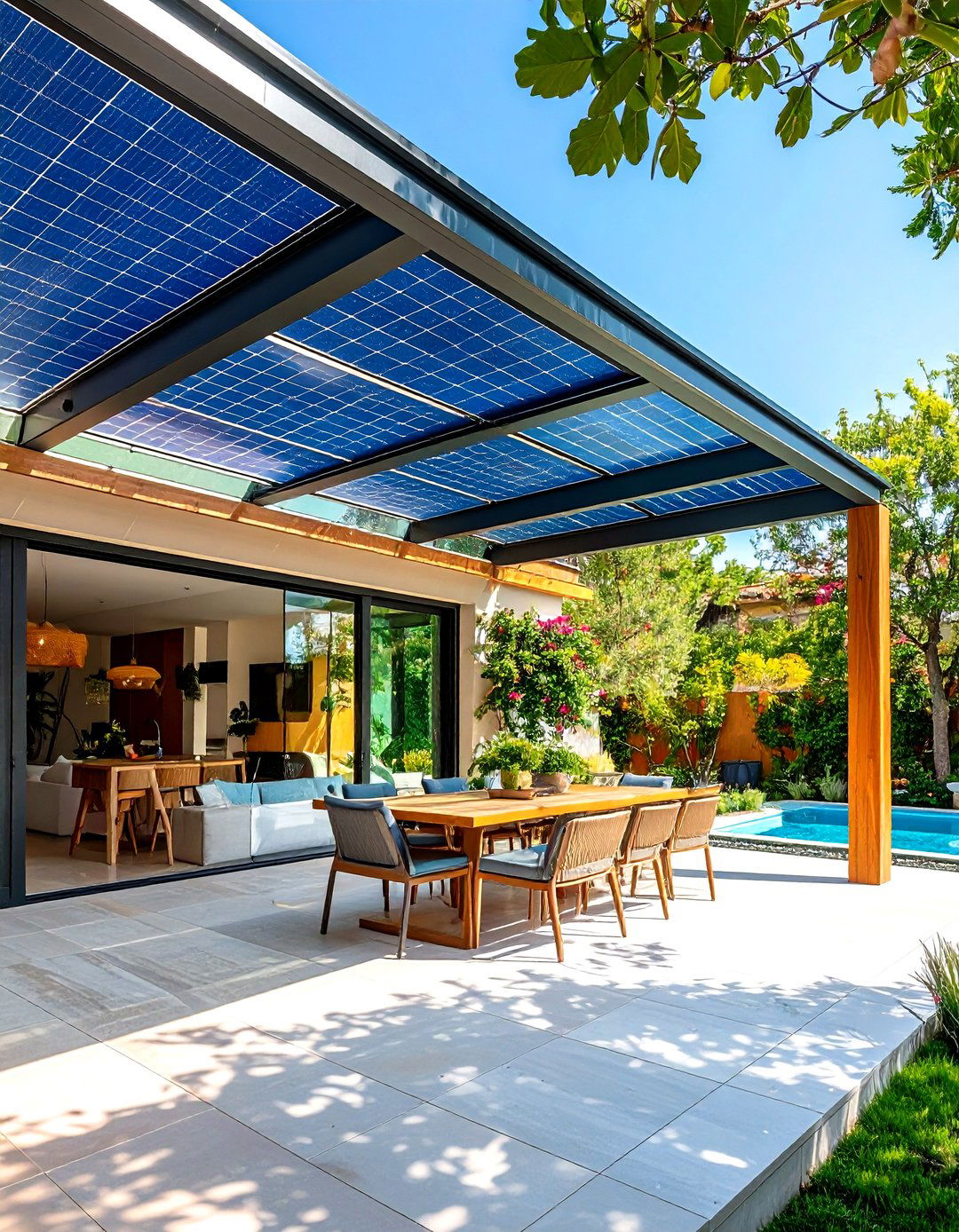
Finally, merge green energy with shelter by supporting frameless photovoltaic glass panels on steel purlins overhead. Panels double as roofing, producing electricity while filtering harsh sun — a technology increasingly spec’d for outdoor lounges in net-zero homes. Choose bifacial modules to capture reflected light from patio paving below, boosting output. Because wiring tucks inside hollow beams, the ceiling appears as sleek glass sheets with minimal hardware. Tie the array to battery storage to power evening lights or even an EV charger, proving your patio ceiling can pay its own way toward sustainability.
Conclusion:
Whether you crave the rustic warmth of cedar, the maintenance-free shine of aluminum, or the tech-savvy smarts of solar panels, today’s patio ceiling options let you shape outdoor living from cozy to cutting-edge. By weighing climate, upkeep, and style, you can select a ceiling that not only protects but enhances your favorite alfresco moments — expanding daylight, taming heat, absorbing sound, or generating clean power. With these 25 patio ceiling ideas in mind, the perfect overhead inspiration is ready to transform your patio into a destination you’ll enjoy in every season.


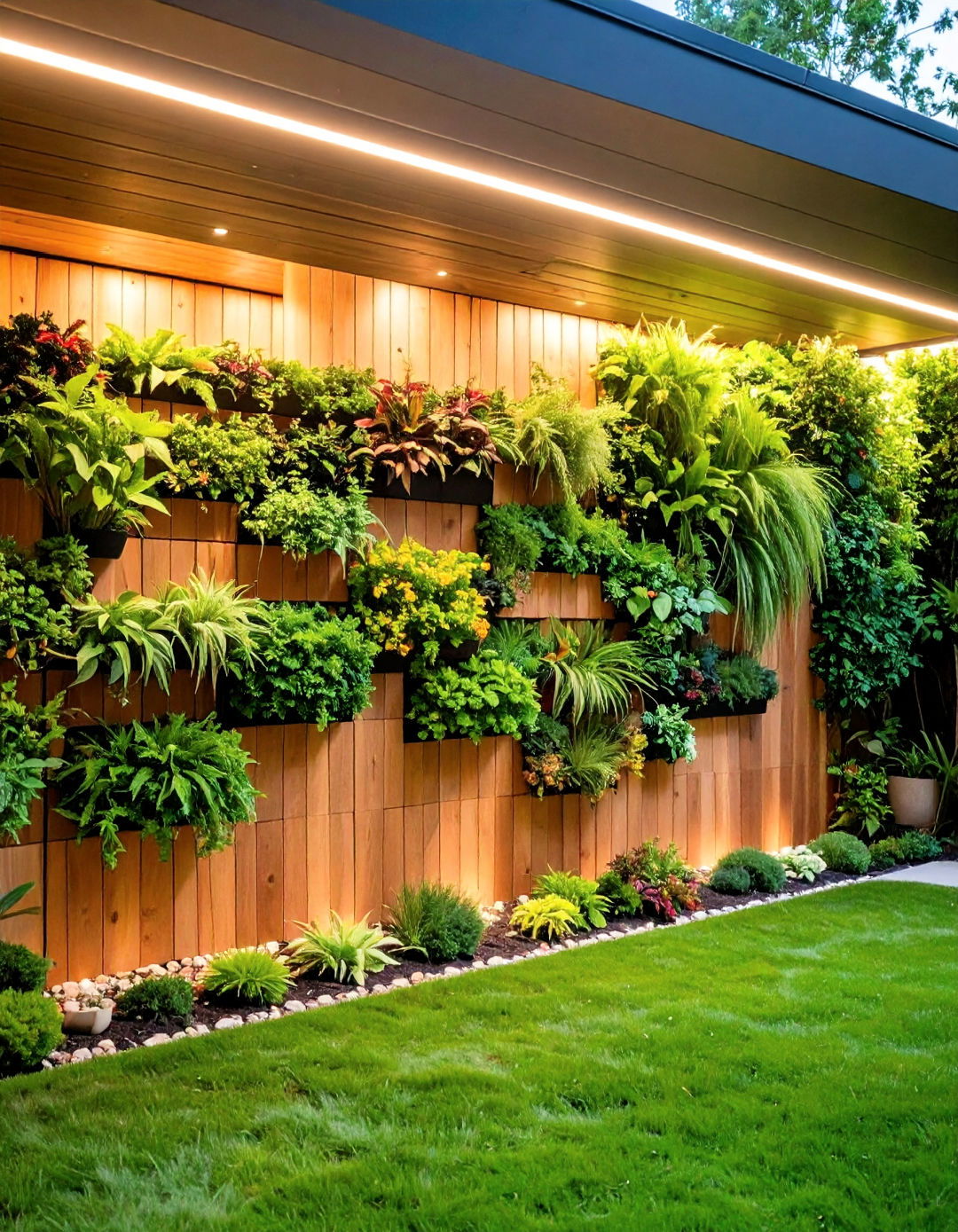
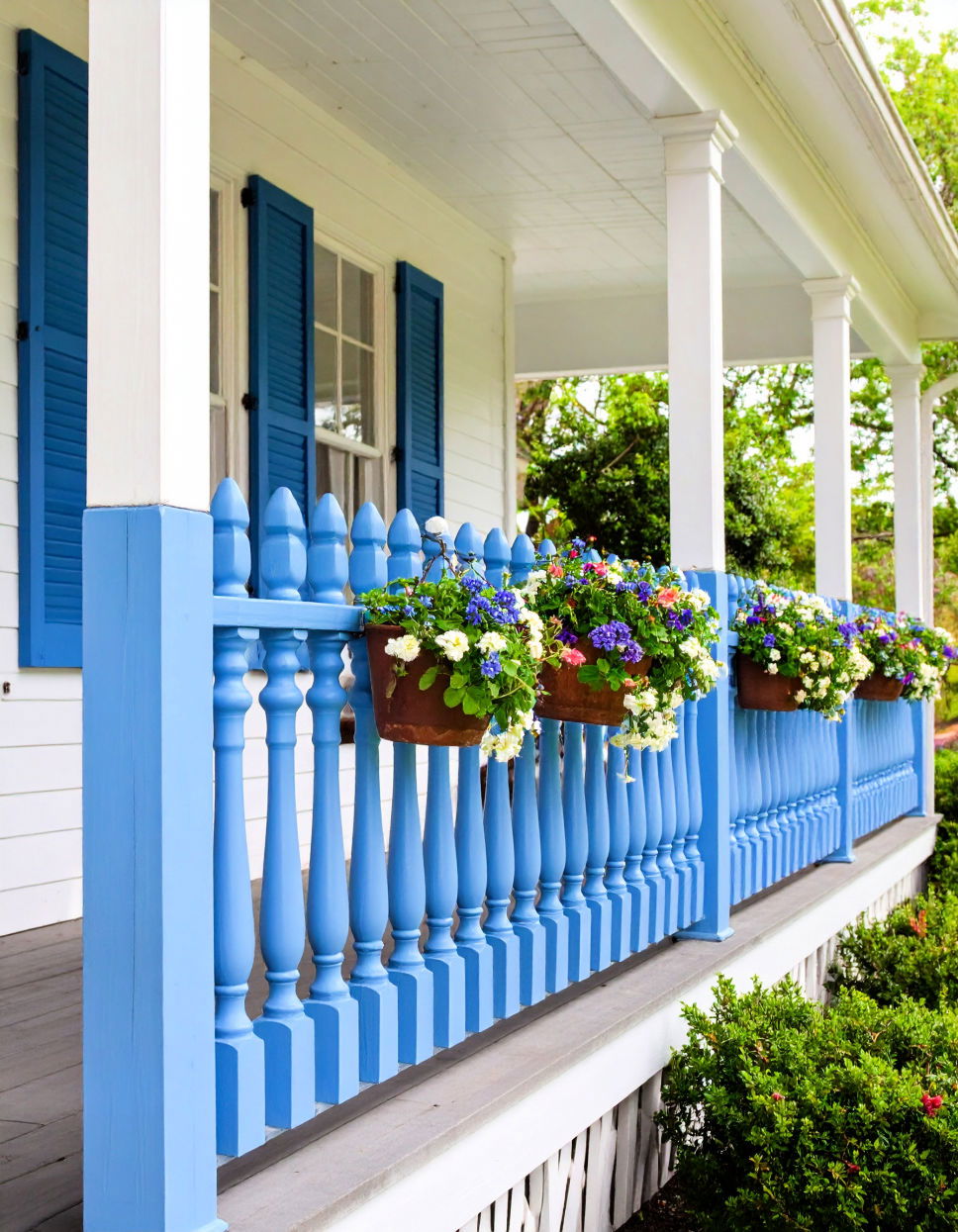
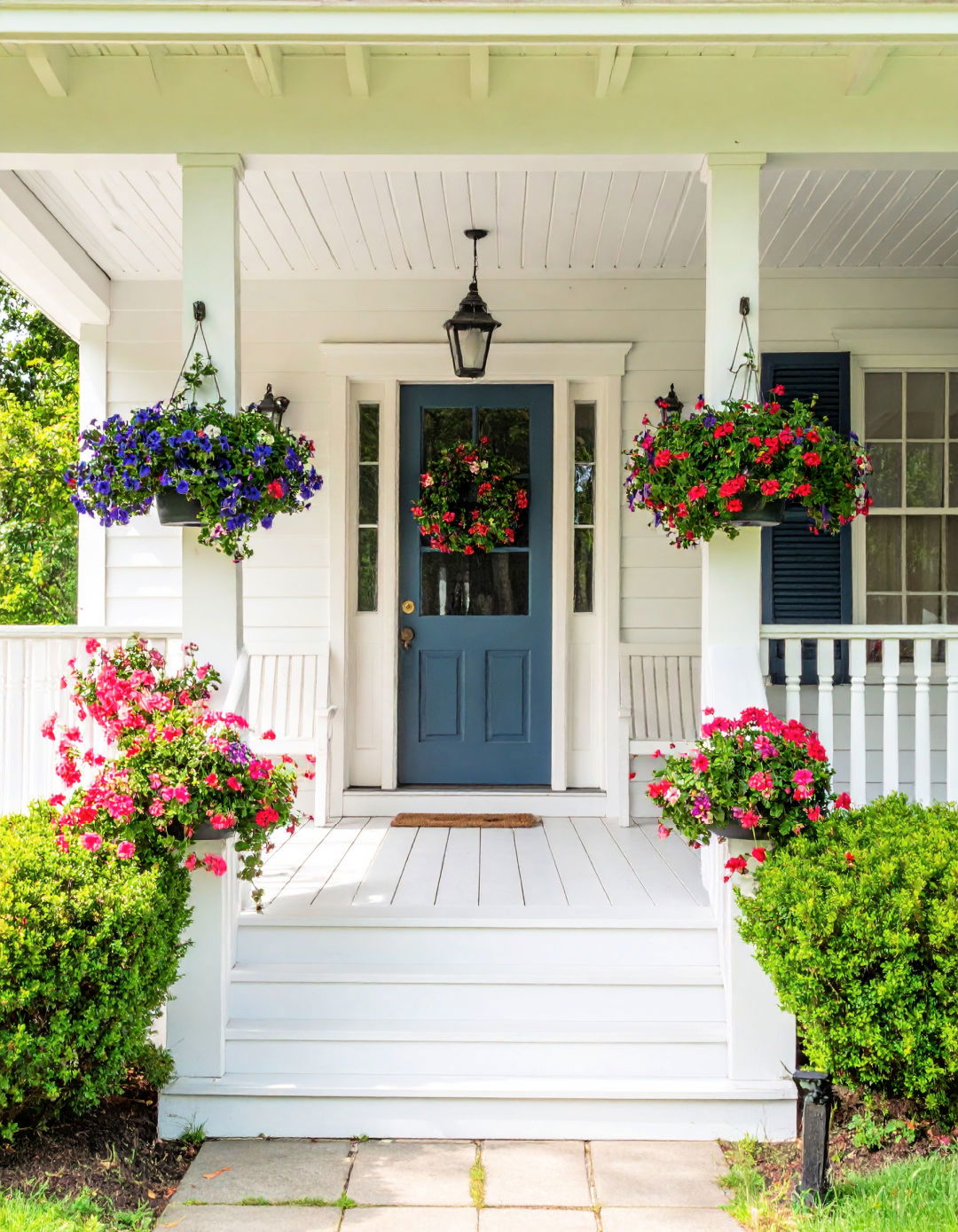
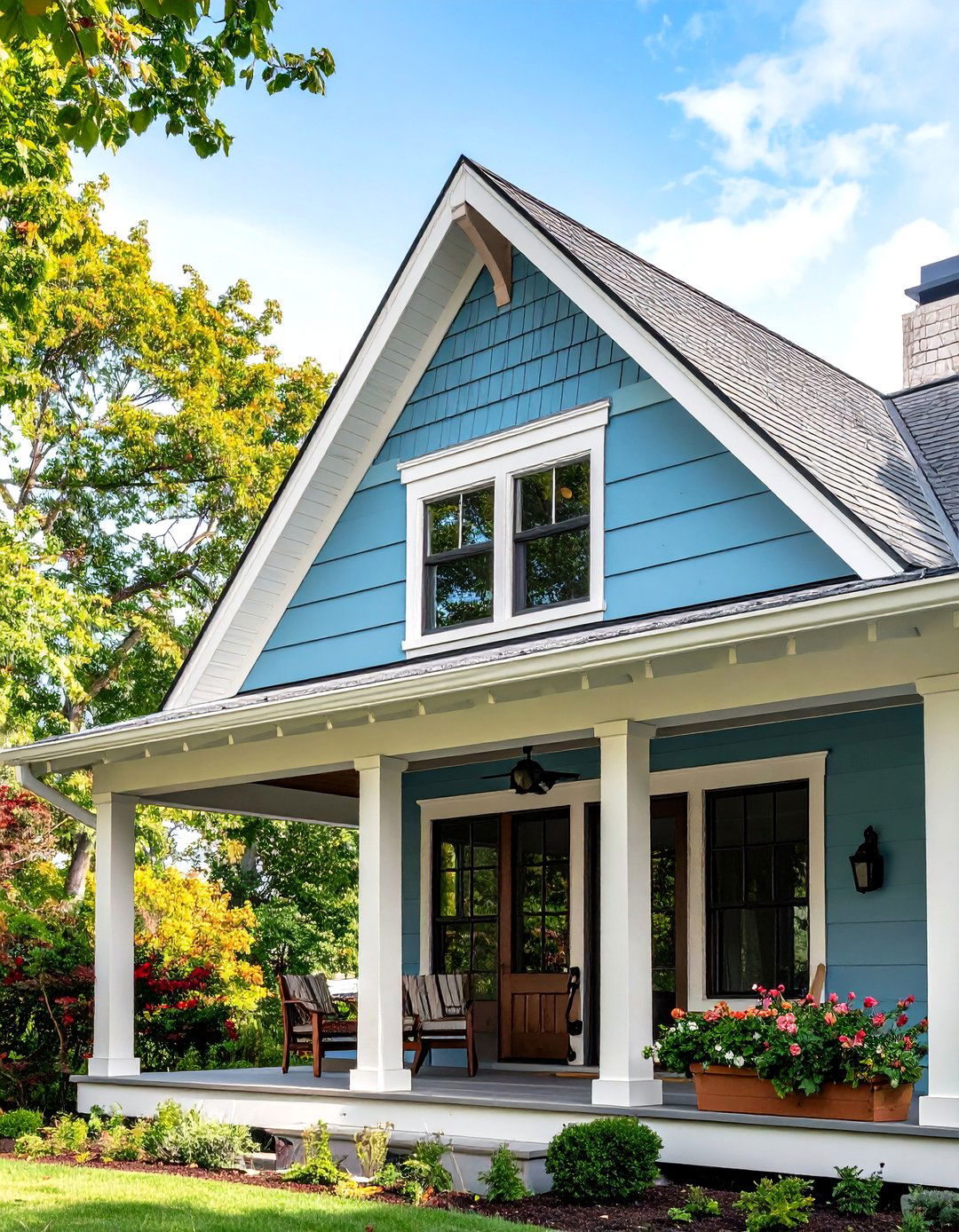
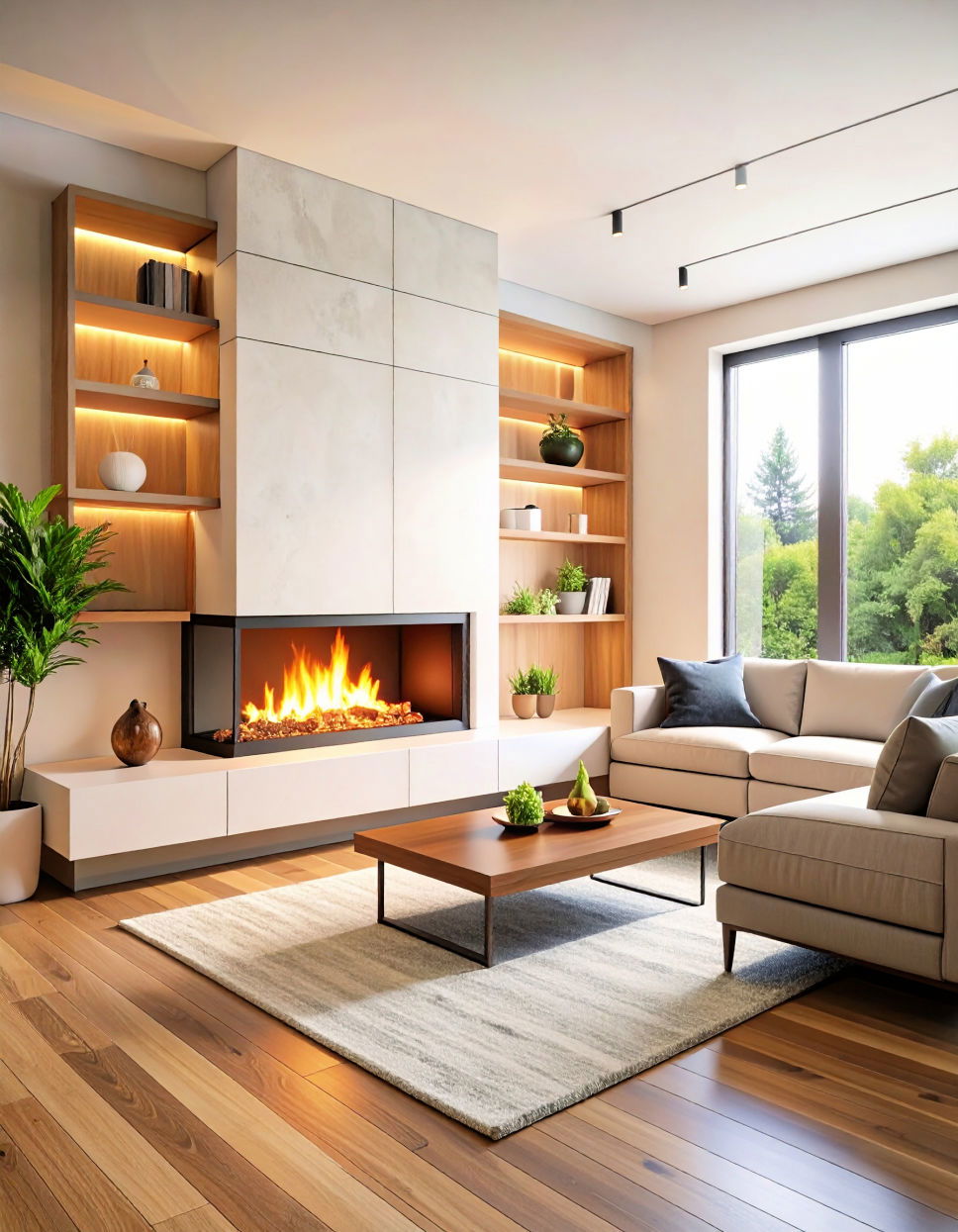
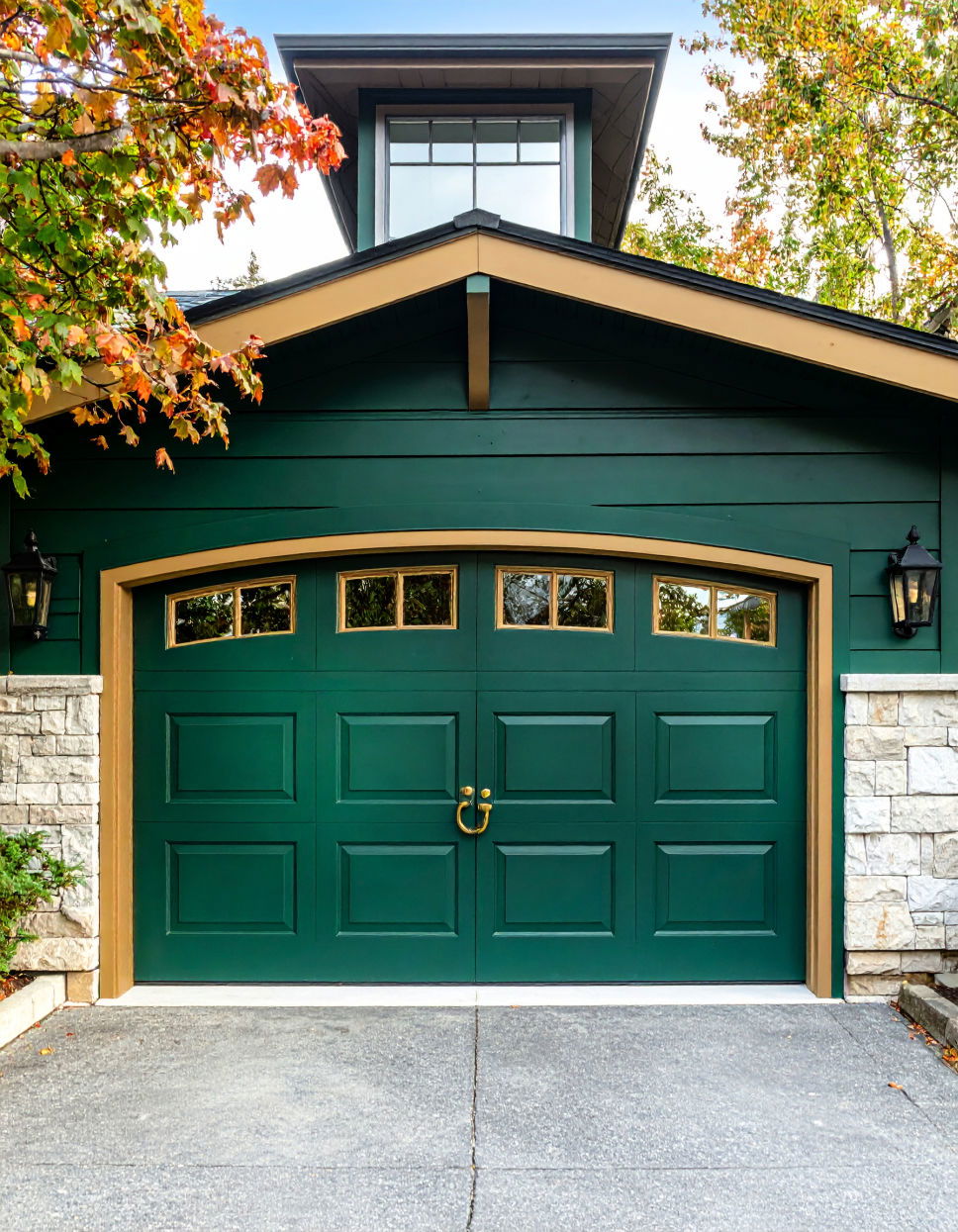

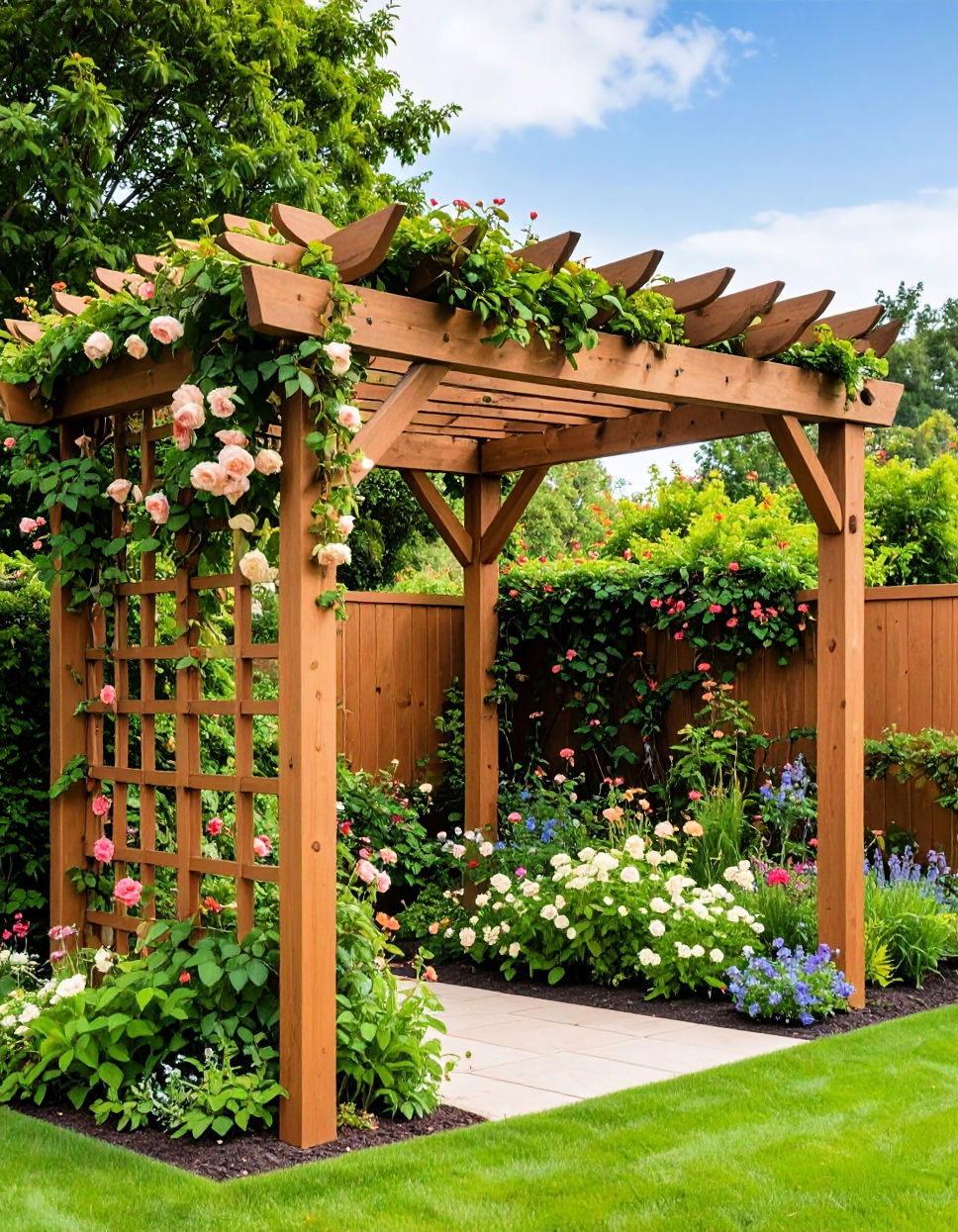
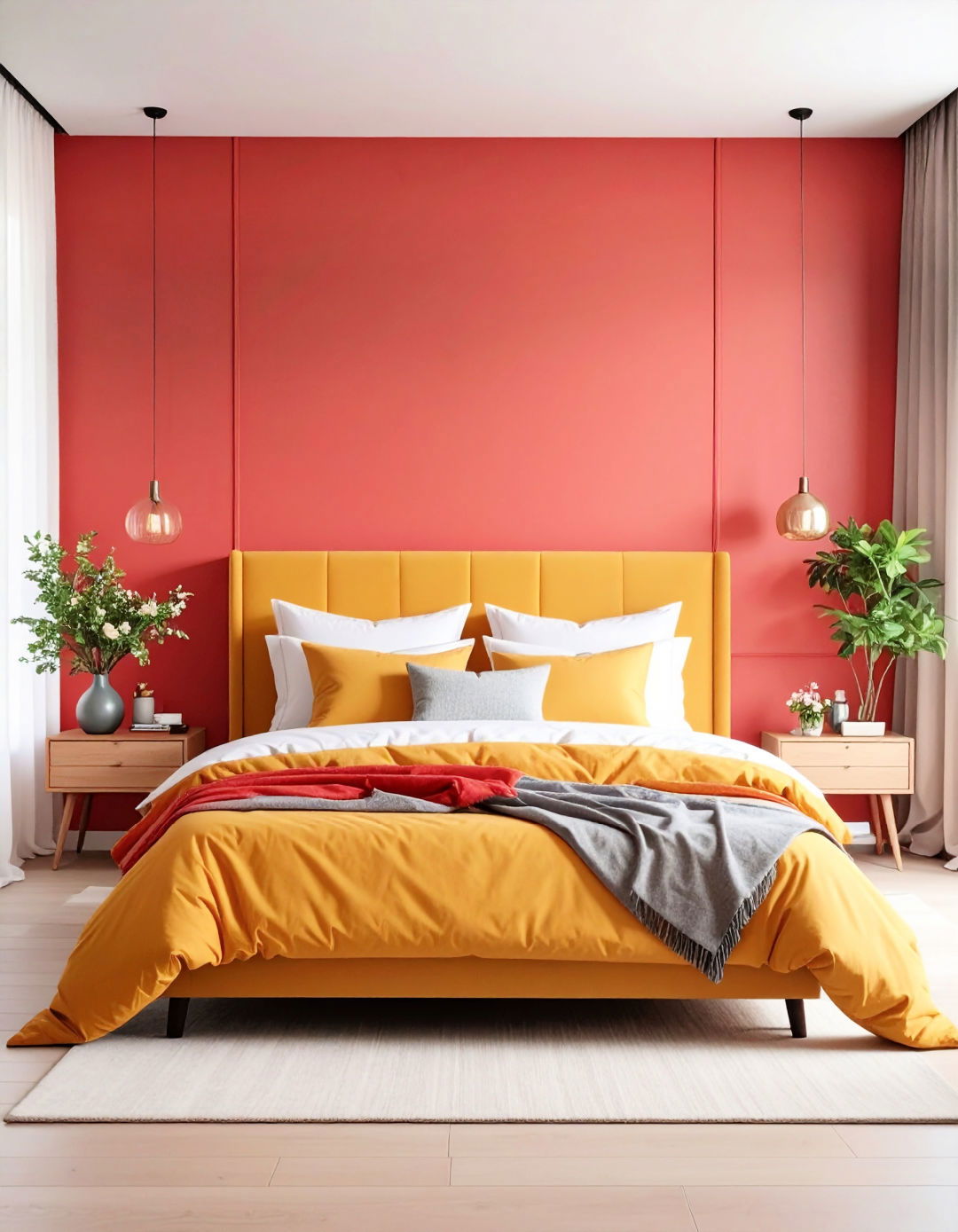
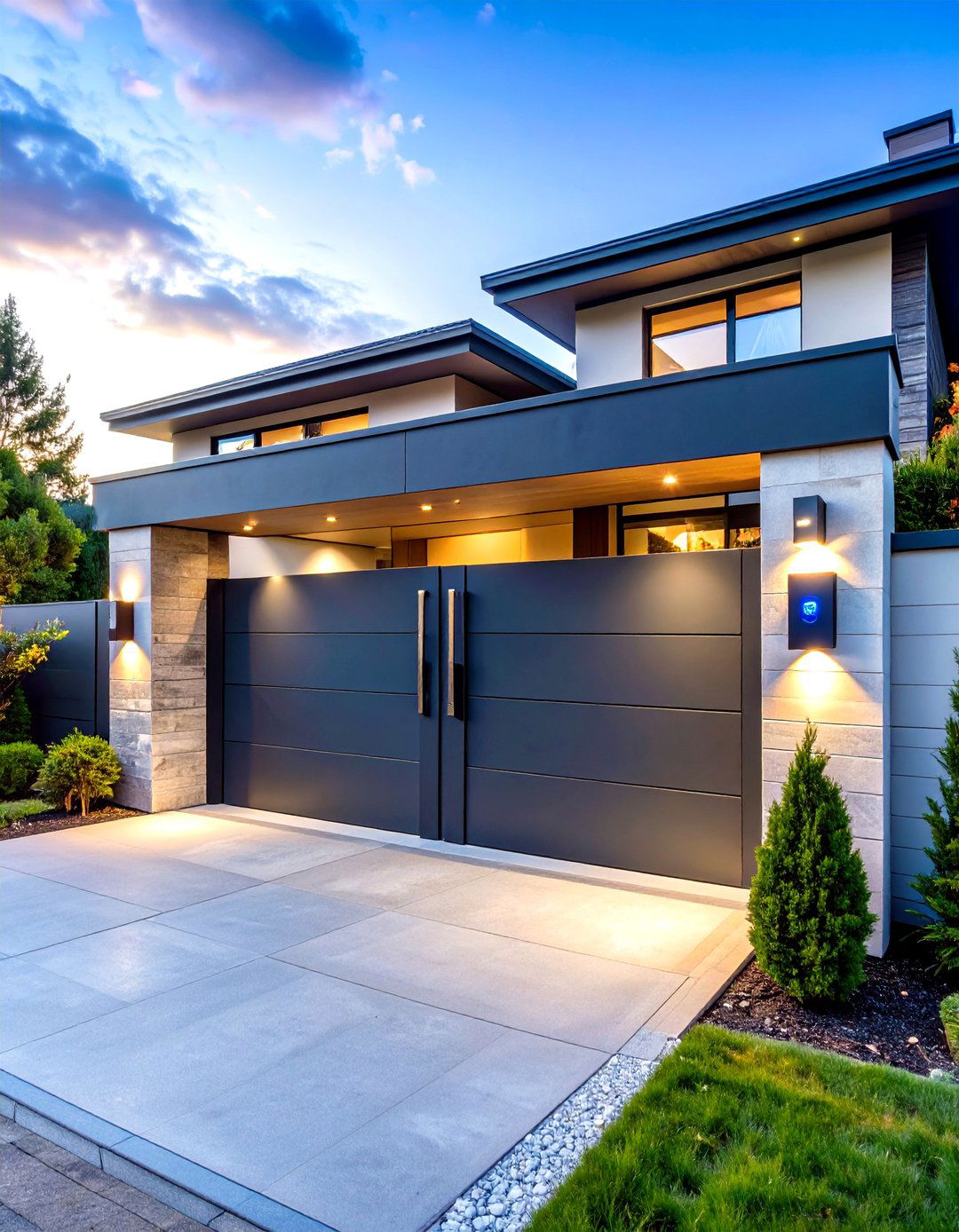
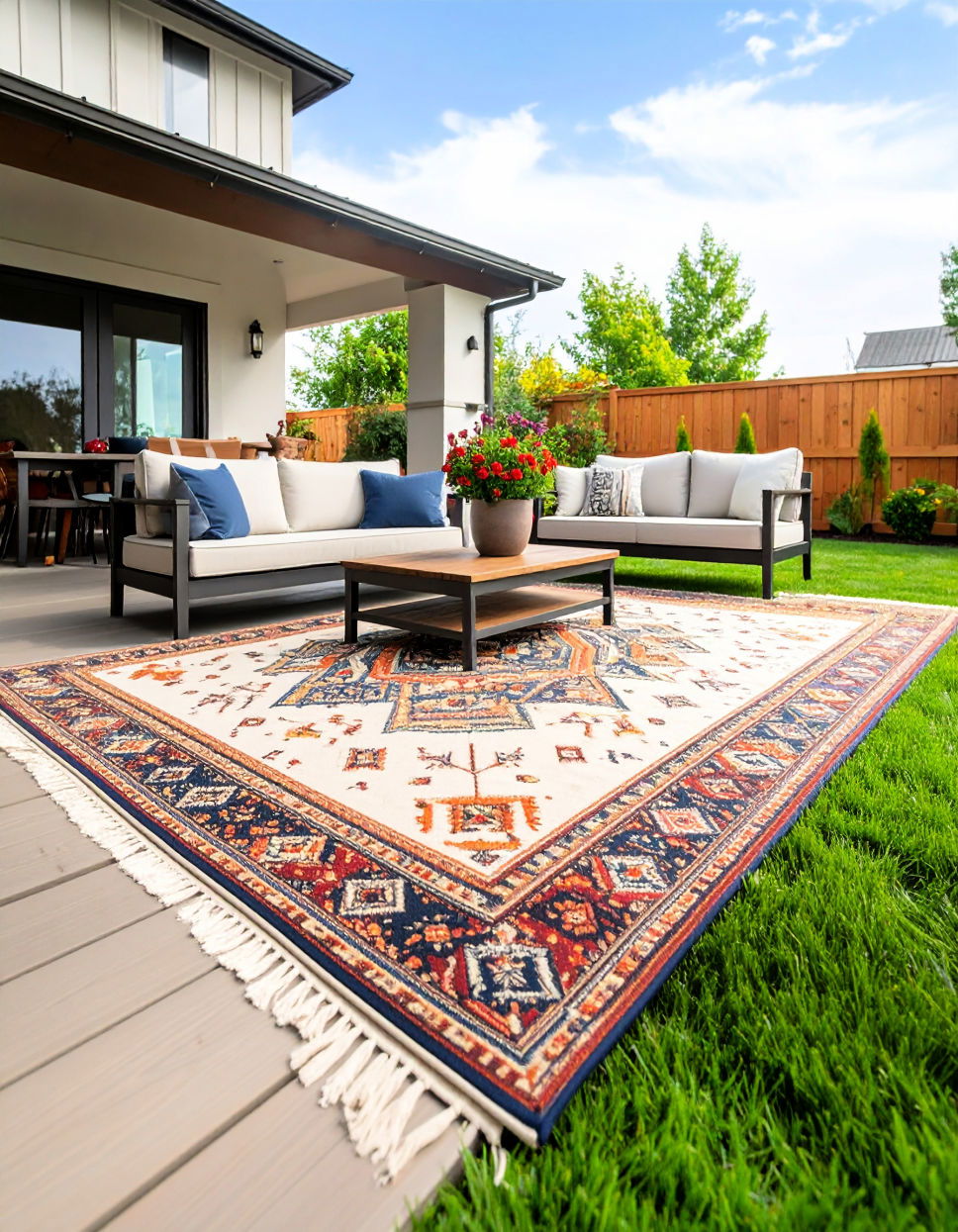
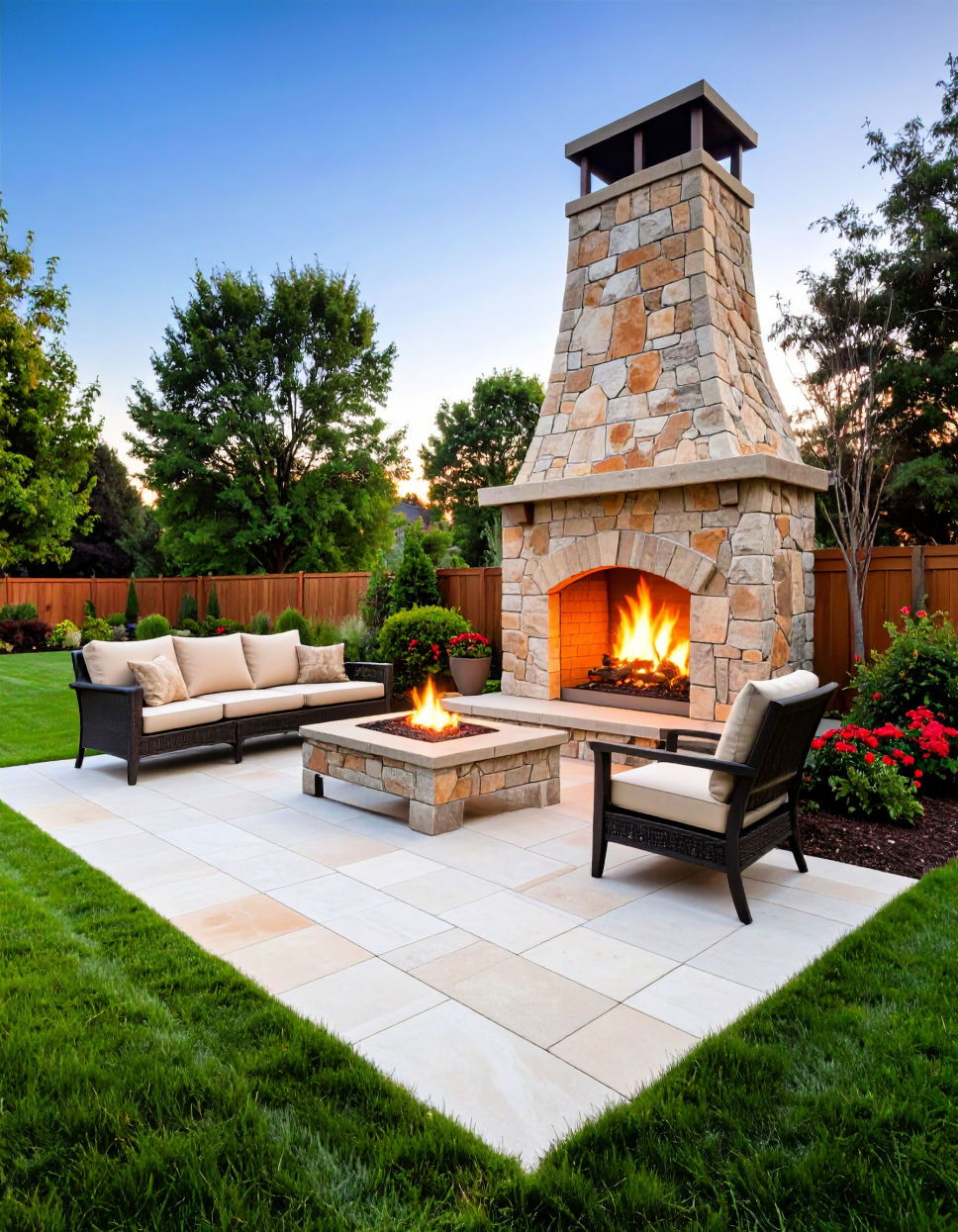

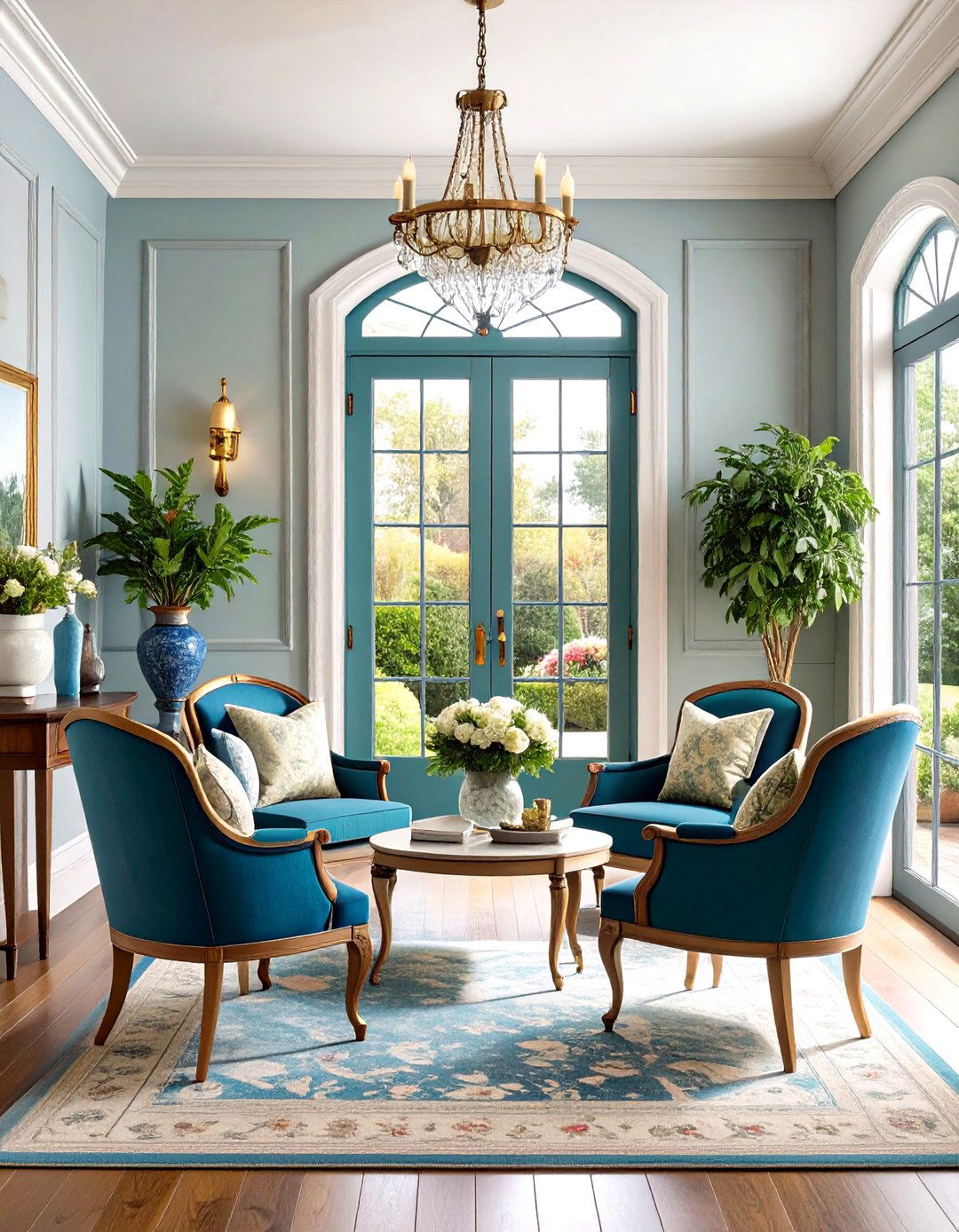
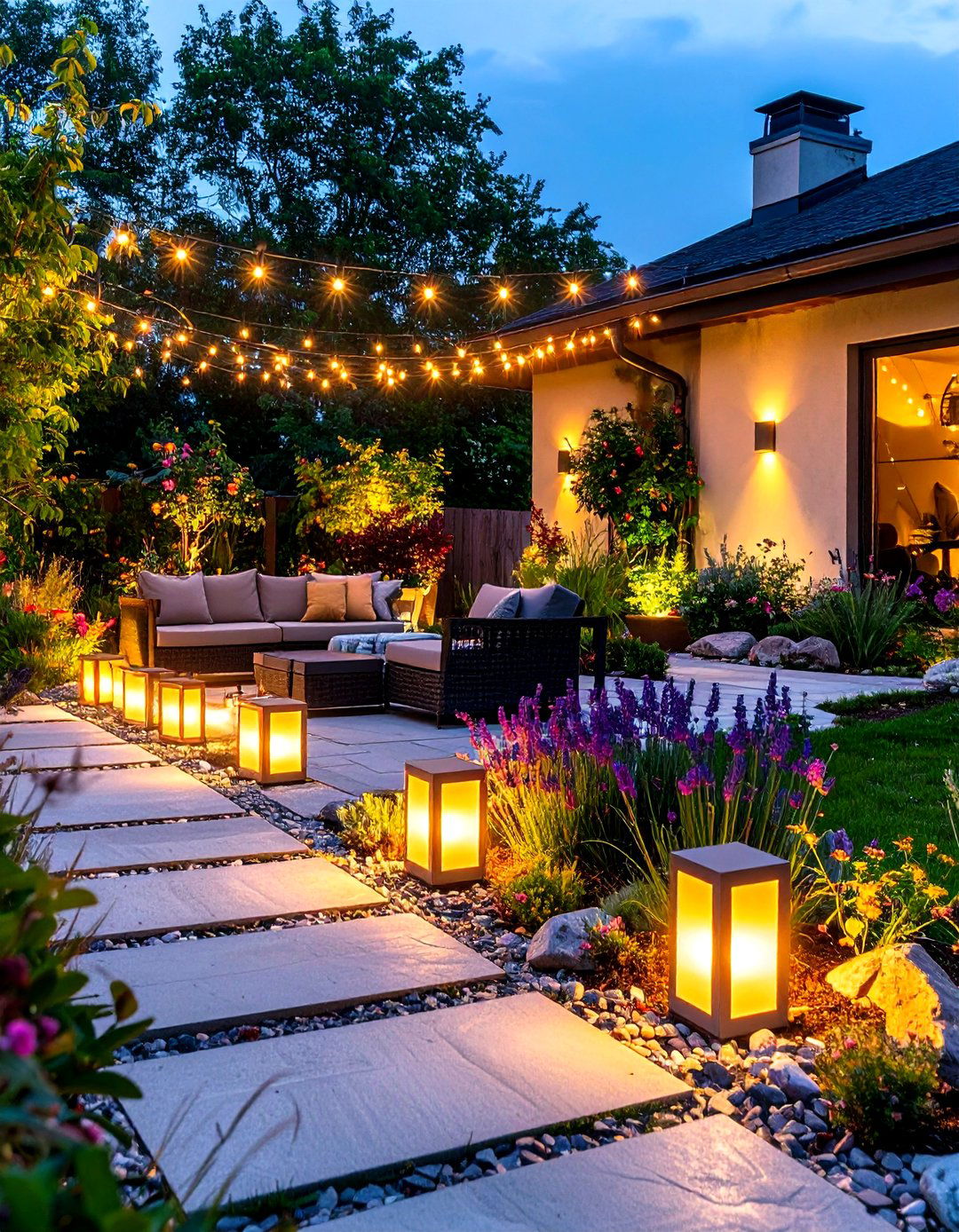
Leave a Reply